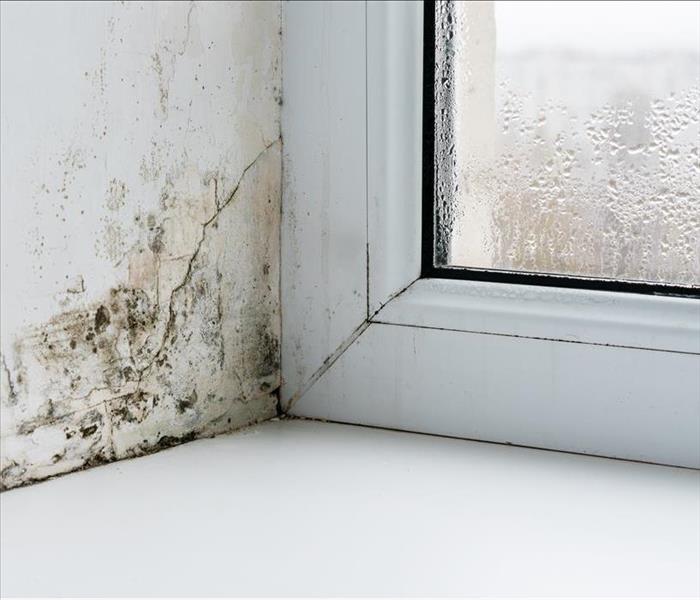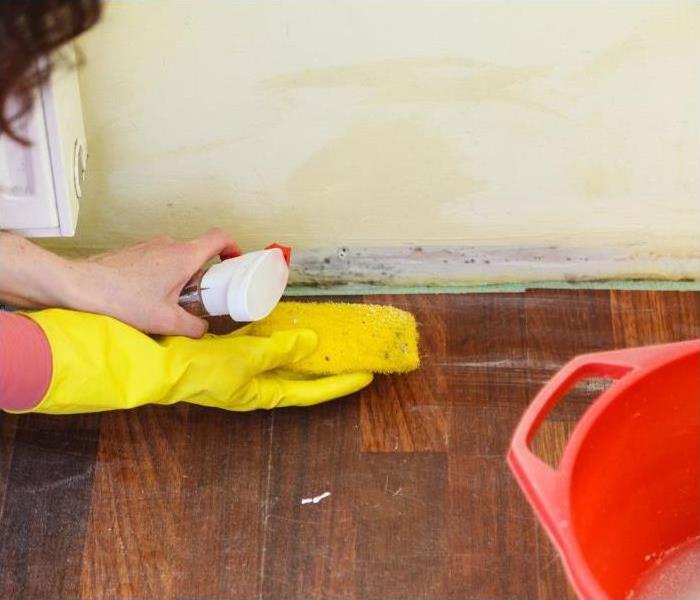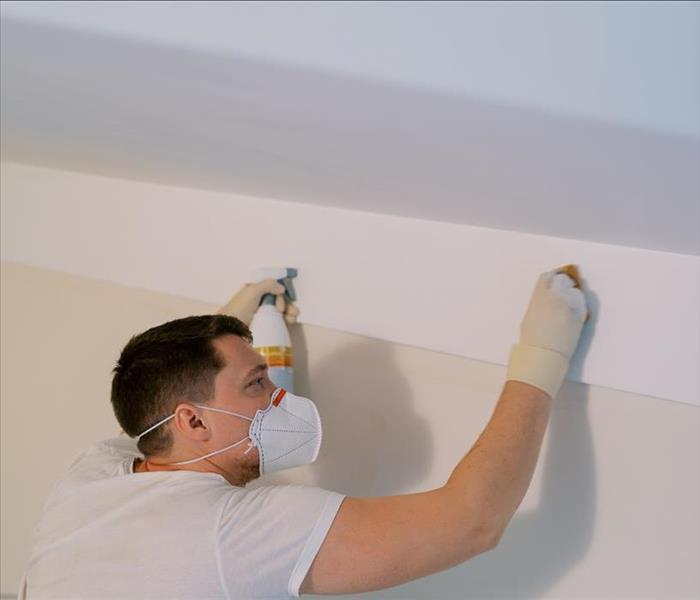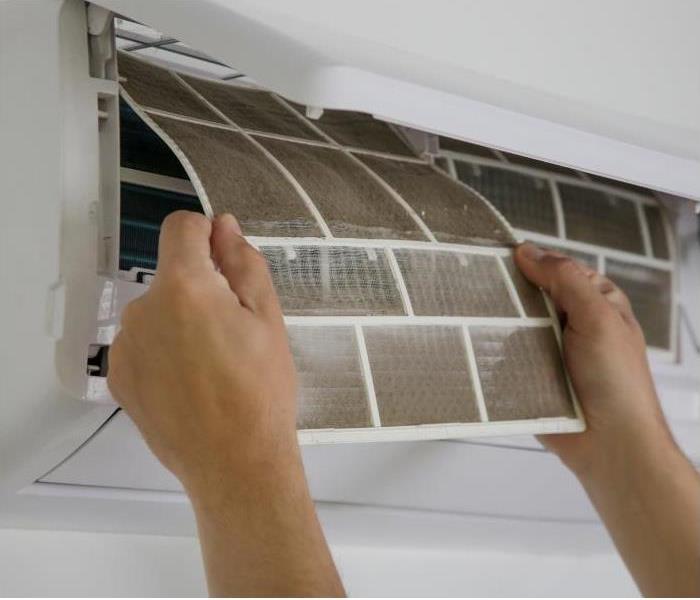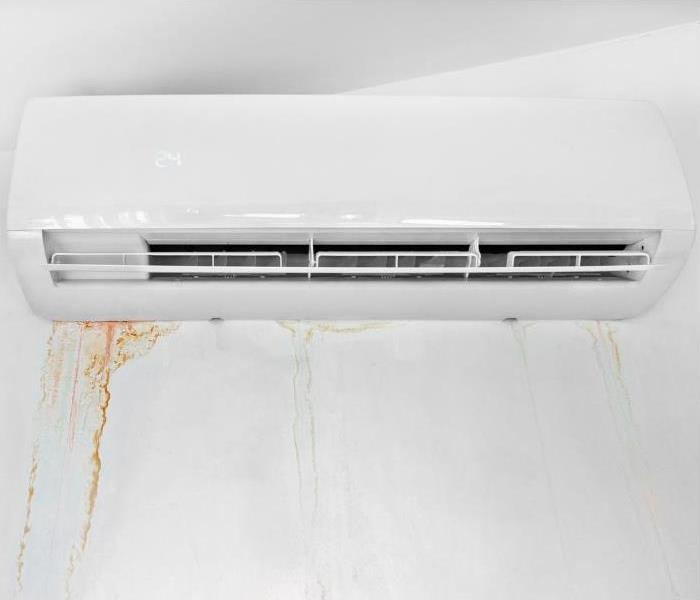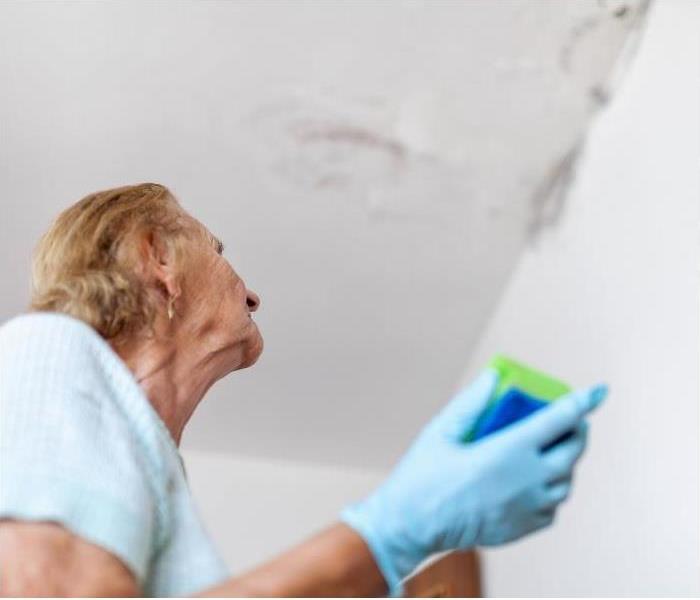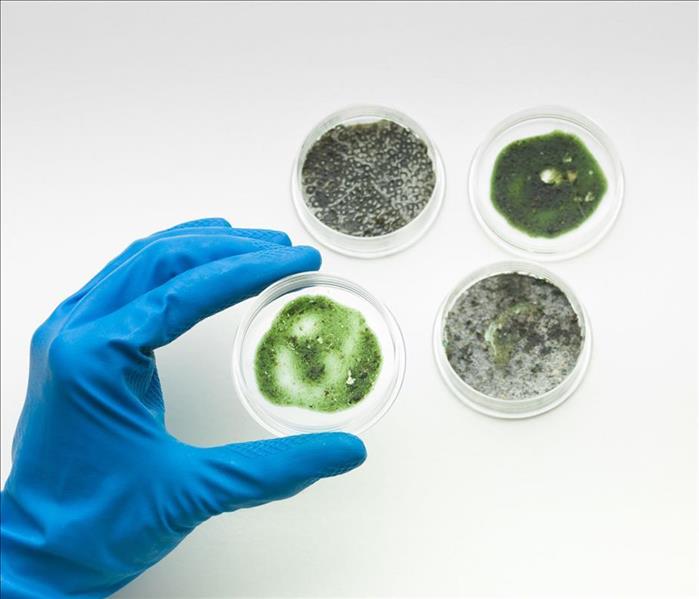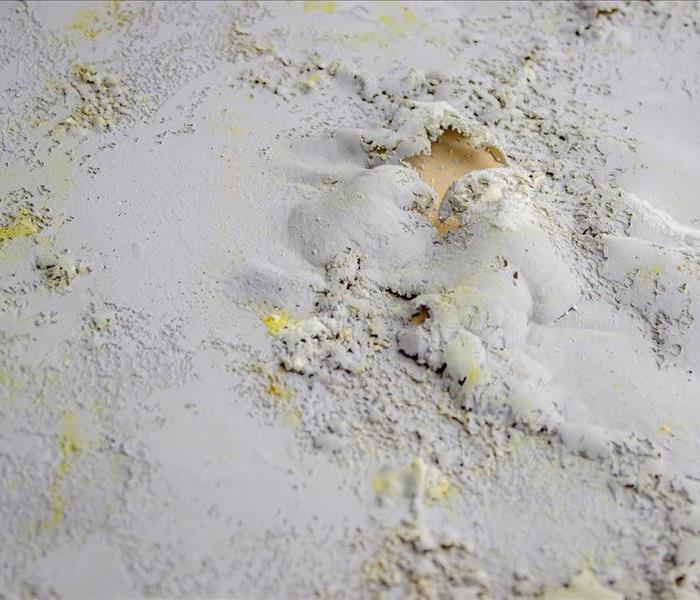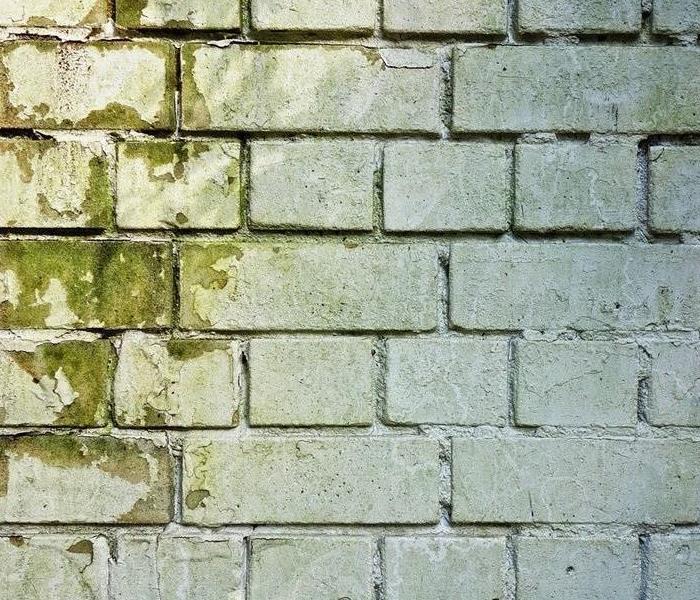Recent Mold Remediation Posts
What Is the Process of Professional Mold Removal?
7/13/2024 (Permalink)
During professional mold removal, first, evaluate and examine the affected area thoroughly using equipment like moisture meters. Then, confine the area properly with barriers and air pressure machines. Utilize HEPA filters for air filtration and purification. Eliminate mold-infested materials meticulously and perform sanitization procedures. Apply antimicrobial treatments to prevent spore growth. Dry and dehumidify the space, monitoring levels closely. Conduct a post-remediation assessment for safety. Finally, preventative measures for future mold prevention should be implemented. This process guarantees effective mold elimination and safeguards against regrowth. Further details on each step enhance understanding of the thorough process.
Key Takeaways
- Thorough initial assessment and inspection using specialized equipment.
- Proper containment measures are needed to prevent mold from spreading.
- Use of advanced air filtration and purification systems.
- Meticulous removal of mold-infested materials and thorough cleaning.
- Post-remediation assessment to ensure effective mold elimination.
Initial Assessment and Inspection
During the initial assessment and inspection, professionals thoroughly examine the affected area to determine the extent of mold growth and identify the underlying causes. Assessment techniques involve meticulously inspecting walls, ceilings, floors, and other surfaces for visible signs of mold, such as discoloration or musty odors. Additionally, professionals may use moisture meters to detect any hidden sources of water that could be promoting mold growth.
To conduct a detailed evaluation, professionals utilize various inspection equipment. Moisture meters are essential tools for measuring the moisture content in different materials, aiding in locating areas with excess moisture that are conducive to mold development. Infrared cameras are also employed to identify temperature differentials that could indicate moisture intrusion behind walls or ceilings. Moreover, borescopes allow professionals to visually inspect confined spaces like air ducts or wall cavities where mold may be present but not easily visible.
Containment of Affected Areas
Inspecting and evaluating the affected area is the first step in implementing proper containment measures to prevent the spread of mold during the removal process. Containment procedures are essential in professional mold removal to make sure that the spores don't disperse to uncontaminated areas. To achieve this, physical barriers such as plastic sheeting and negative air pressure machines are commonly used. These barriers isolate the affected area, minimizing the risk of cross-contamination.
When setting up containment, meticulous attention to detail is important. All openings, vents, and gaps need to be sealed to prevent mold spores from escaping into other parts of the building. Removal techniques must be carefully planned to avoid disturbing the mold and causing it to become airborne. Workers should wear appropriate personal protective equipment, including masks and gloves, to safeguard themselves from exposure.
Additionally, specialized equipment like HEPA vacuums and air scrubbers are employed to capture and filter out mold particles from the air. These tools aid in maintaining air quality within the containment area and the surrounding spaces. By following strict containment procedures and utilizing effective removal techniques, the risk of mold spreading to unaffected areas is notably reduced, ensuring a thorough and successful mold remediation process.
Air Filtration and Purification
To enhance the quality of air within the containment area and adjacent spaces, employing specialized air filtration and purification equipment is essential in professional mold removal processes. Air quality is of utmost importance during mold remediation to prevent the spread of mold spores to unaffected areas and to guarantee the health and safety of occupants and workers.
During the mold removal process, air filtration and purification systems such as HEPA (High-Efficiency Particulate Air) filters are utilized to capture and trap mold spores and other airborne particles. These systems work by continuously circulating air through filters that are designed to capture even the smallest particles, thereby improving the overall air quality in the affected environment.
In addition to filtration, ventilation systems play a vital role in maintaining proper air circulation and reducing humidity levels, which are crucial for mold growth. By incorporating proper ventilation, fresh air is introduced, and stale or contaminated air is removed, creating a healthier indoor environment.
Effective air filtration and purification not only help in removing mold spores from the air but also contribute to preventing the regrowth of mold in the future. By investing in advanced air quality control measures, professional mold removal services can guarantee a thorough and lasting solution to mold infestations.
Removal of Mold-Infested Materials
Employing thorough methods, professionals meticulously eliminate mold-infested materials to eradicate potential sources of mold growth. Mold spore removal is a crucial aspect of this process to prevent further contamination. Structural repairs are often necessary to address the underlying issues that led to mold growth. Professionals start by identifying and isolating the affected areas to contain the spread of mold spores.
During the removal process, hazardous waste disposal protocols are strictly followed to guarantee the safe handling of contaminated materials. Safety precautions such as wearing protective equipment like gloves, masks, and suits are essential to safeguard against exposure to harmful mold spores. Contaminated materials are bagged and sealed properly before being disposed of in designated areas for hazardous waste.
Once the mold-infested materials are removed, the focus shifts to repairing the structural elements that may have been damaged by mold growth. This step involves fixing leaks, improving ventilation, and addressing any moisture issues to prevent future mold problems. By combining mold removal with structural repairs, professionals provide a thorough solution that eliminates mold at its source and reduces the likelihood of recurrence.
Cleaning and Sanitization Procedures
Thorough cleaning and sanitization procedures are essential in completely eradicating mold spores and preventing future contamination. When dealing with mold, it's vital to employ effective chemical treatment methods and surface disinfection techniques to eliminate any lingering spores.
To begin the cleaning process, professionals will utilize specialized chemical treatments designed to break down mold at its roots. These chemicals are carefully selected to be safe for both the occupants of the space and the environment, yet potent enough to eradicate mold effectively.
Once the chemical treatment has been applied and given ample time to work its magic, the next step involves thorough surface disinfection. This step is critical in removing any remaining mold spores that might've survived the initial treatment. Professionals will meticulously disinfect all affected surfaces to guarantee that no trace of mold is left behind.
HEPA Vacuuming and Scrubbing
Utilize a high-efficiency particulate air (HEPA) vacuum and scrubbing tools to remove any remaining mold residue from surfaces effectively. When performing HEPA vacuuming as part of the mold removal process, make sure the vacuum is equipped with a HEPA filter to capture tiny mold spores that may become airborne during the cleaning process. Begin by slowly passing the HEPA vacuum over all contaminated surfaces, paying special attention to corners, crevices, and areas with visible mold growth. Use a steady back-and-forth motion to guarantee the thorough removal of mold spores.
In conjunction with HEPA vacuuming, employ effective scrubbing methods to eliminate stubborn mold residue. Choose appropriate scrubbing tools such as brushes or scrub pads based on the surface being cleaned. For hard surfaces, use a stiff-bristled brush to dislodge mold from grout lines or textured surfaces. When scrubbing, apply steady pressure while moving in circular motions to lift and remove mold effectively. For softer surfaces, utilize a gentle scrub pad to avoid damage while still effectively removing mold residue.
Employing proper vacuuming techniques and scrubbing methods is essential in the professional mold removal process to make sure all mold residue is effectively eliminated. By combining the power of a HEPA vacuum with meticulous scrubbing, you can thoroughly clean affected areas and prevent mold regrowth.
Application of Antimicrobial Solutions
To effectively eradicate any remaining mold spores and prevent regrowth, it's essential to apply antimicrobial solutions meticulously during the professional mold removal process. Antimicrobial treatments play a pivotal role in mold prevention and maintenance by inhibiting the growth of mold and eliminating existing spores. These solutions are specially formulated to target mold at its root, guaranteeing a thorough and effective treatment.
The effectiveness of antimicrobial solutions lies in their ability to penetrate porous surfaces where mold can thrive. When applied correctly, these treatments not only kill mold on the surface but also reach deep into materials to address hidden spores. This thorough approach is crucial for preventing future mold issues and maintaining a healthy indoor environment.
During the application of antimicrobial solutions, technicians follow precise protocols to ensure optimal results. They carefully spray or apply the solution to affected areas, making sure to cover all surfaces where mold is present. Additionally, technicians may use specialized equipment to reach difficult-to-access areas and guarantee comprehensive coverage.
Drying and Dehumidification
For effective mold remediation, the next critical step in the professional mold removal process involves implementing thorough drying and dehumidification methods. To guarantee the successful removal of mold and prevent its reoccurrence, follow these key steps:
- Moisture Control: Begin by addressing the source of moisture that led to mold growth. Fix any leaks or water intrusions to prevent further moisture accumulation, as mold thrives in damp environments.
- Ventilation Techniques: Enhance airflow within the affected area by utilizing fans, dehumidifiers, and opening windows when possible. Proper ventilation helps in drying out the space and reducing humidity levels.
- Structural Drying: Focus on drying out the structure of the building thoroughly. This includes walls, floors, ceilings, and any other affected surfaces. Use specialized equipment like air movers and heaters to expedite the drying process.
- Humidity Monitoring: Continuously monitor the humidity levels in the environment during the drying process. Utilize hygrometers to measure and maintain ideal humidity levels, typically between 30-50%, to inhibit mold growth.
Post-Remediation Assessment
Addressing the effectiveness of the mold removal process, the next step involves conducting a thorough Post-Remediation Assessment to validate the successful elimination of mold and the restoration of a safe environment. Post-remediation testing is vital in ensuring that the indoor air quality meets acceptable standards after the mold removal procedures.
During the Post-Remediation Assessment, specialized tools are used to measure various parameters such as humidity levels, temperature, and indoor air quality. This evaluation helps in confirming that the remediation process effectively eliminated all mold sources and that the environment is now safe for habitation.
One key aspect of post-remediation testing is evaluating the indoor air quality. This involves sampling the air for mold spores and other contaminants to make sure that the levels are within acceptable limits. Additionally, surface sampling may be conducted to check for any remaining mold on surfaces.
Post-remediation testing not only validates the success of the mold removal process but also provides peace of mind, knowing that the environment is now free from harmful mold contaminants. It's an essential step in ensuring the health and safety of occupants in the treated area. By following through with a thorough Post-Remediation Assessment, you can rest assured that the mold has been effectively eliminated and the indoor air quality has been restored to a safe level.
Preventative Measures and Recommendations
Implementing preventative measures and recommendations is vital in maintaining a mold-free environment and safeguarding against future contamination. To achieve this, follow these key steps:
- Moisture Control: Proper moisture control is essential in preventing mold growth. Make sure that all areas prone to moisture buildup, such as bathrooms, kitchens, and basements, are well-ventilated and kept dry. Consider using dehumidifiers in areas with high humidity levels to keep them within the recommended range of 30-50%.
- Ventilation Strategies: Implement effective ventilation strategies in your home or workspace. This includes using exhaust fans in bathrooms and kitchens, opening windows when weather permits, and utilizing air conditioning systems with good ventilation capabilities. Proper ventilation helps to reduce humidity levels and prevent mold from thriving.
- Mold-Resistant Materials: Use mold-resistant materials when renovating or building structures. Opt for mold-resistant drywall, paint, and insulation to minimize the risk of mold growth. These materials are specifically designed to deter mold formation even in damp conditions.
- Humidity Monitoring: Regularly monitor indoor humidity levels to ensure they remain within the recommended range. Invest in a hygrometer to measure humidity accurately and take necessary actions if levels rise above 50%. Monitoring humidity levels allows for early detection of potential mold growth triggers.
Final Thoughts
The professional mold removal process involves a series of meticulous steps to ensure the complete eradication of mold and prevent future growth.
From initial assessment to containment, removal, cleaning, and post-remediation assessment, each phase is vital in achieving a mold-free environment.
By following these steps with precision and implementing preventative measures, you can effectively address mold issues and maintain a healthy living or working space.
Mold Remediation Timeline: How Long Will It Take to Remove Mold From My Home?
6/10/2024 (Permalink)
 Mold Remediation Timeline: How Long Will It Take to Remove Mold From My Home?
Mold Remediation Timeline: How Long Will It Take to Remove Mold From My Home?
Imagine discovering mold in your home, a silent intruder growing unnoticed in the dark corners of your living space. Like a persistent weed, mold can spread quickly if left unchecked, posing potential health risks and structural damage.
But fear not, for the process of mold remediation is akin to a skilled gardener removing weeds from a garden bed, restoring it to its former glory.
In this discussion, we will explore the various stages of mold remediation, from the initial assessment to the post-remediation verification, and reveal the factors that influence the timeline.
So, grab your gardening gloves, and let's uncover the secrets of mold removal.
Initial AssessmentDuring the initial assessment, you'll need to thoroughly examine the affected areas for any signs of mold growth. It's important to identify the moisture source that's allowing mold to thrive. By pinpointing the root cause, you can prevent future mold growth and ensure a mold-free environment for you and your loved ones.
When conducting the assessment, pay close attention to areas that are prone to moisture, such as bathrooms, kitchens, and basements. Look for any visible mold growth, which may appear as black or green spots on walls, ceilings, or other surfaces. Additionally, be mindful of any musty or earthy odors, as they could indicate the presence of hidden mold.
Remember, mold can pose serious health risks, especially to individuals with allergies or respiratory conditions. Exposure to mold spores can trigger symptoms such as coughing, sneezing, and wheezing. In severe cases, it can lead to asthma attacks or other respiratory infections. Therefore, it's crucial to address mold growth promptly and effectively.
If you discover mold during the initial assessment, it's essential to take immediate action. Start by addressing the underlying moisture issue to eliminate the mold's source of nourishment. This may involve fixing leaks, improving ventilation, or reducing humidity levels. Once the moisture problem is resolved, you can proceed with the mold remediation process.
Containment and Air FiltrationTo effectively address the mold growth identified during the initial assessment, the next step is to implement containment measures and air filtration. This is crucial in preventing the spread of mold spores and ensuring the safety of your home and family.
Here are three important aspects of containment and air filtration that you should be aware of:
Containment Techniques: To prevent mold spores from spreading to unaffected areas of your home, containment measures are put in place. This typically involves creating a physical barrier using plastic sheeting and tape to isolate the affected area. The containment area is then kept under negative air pressure to ensure that any mold spores released during remediation are contained within the designated area.
HEPA Filters: High-Efficiency Particulate Air (HEPA) filters are an essential part of the remediation process. These filters are designed to capture tiny particles, including mold spores, from the air. HEPA filters are used in air scrubbers and vacuums to remove airborne mold particles and maintain clean air quality during the remediation process.
Air Filtration: Along with containment and the use of HEPA filters, air filtration is an important step in removing mold spores from the air. This is achieved through the use of air purifiers equipped with HEPA filters, which continuously circulate and filter the air in the affected area. This helps to improve the air quality and reduce the risk of mold spores spreading to other parts of your home.
Mold Removal and CleaningStart by thoroughly cleaning the affected area to remove any visible mold growth. Mold removal and cleaning are essential steps in the mold remediation process to ensure the safety and well-being of your home and family. Effective cleaning techniques won't only eliminate existing mold but also prevent future mold growth.
To begin, gather the necessary supplies such as gloves, goggles, a mask, and a brush or sponge. These items will protect you from potential health risks and allow you to properly clean the affected area. Before you start cleaning, make sure to seal off the area to prevent the spread of mold spores to other parts of your home.
When cleaning, use a solution of water and detergent or a specialized mold cleaner. Scrub the affected surfaces thoroughly, ensuring that you reach all the nooks and crannies where mold might be hiding. Pay close attention to areas that are prone to moisture, such as bathrooms, kitchens, and basements.
After cleaning, it's crucial to dry the area completely. Mold thrives in damp environments, so ensuring that all moisture is eliminated will help prevent mold from returning. Use fans or dehumidifiers to speed up the drying process and ensure that the area is well-ventilated.
In addition to cleaning the affected area, take steps to prevent future mold growth. Address any underlying moisture issues, such as leaks or high humidity levels. Repairing these issues will create an environment that's less conducive to mold growth.
Regularly inspect your home for signs of mold and address any issues promptly. By following these mold prevention and effective cleaning techniques, you can maintain a mold-free and healthy living environment for you and your family.
Structural Repairs and RestorationBegin by assessing the extent of the damage and identifying any structural repairs that need to be addressed for effective mold remediation. Structural repairs are an important aspect of the mold remediation process as they ensure the long-term stability and safety of your home.
Here are three key considerations for structural repairs during the mold remediation process:
Identify and repair water damage: Mold often thrives in areas with excess moisture. Therefore, it's crucial to identify and address any underlying water damage that may have caused the mold growth. This could involve fixing leaky pipes, repairing damaged roofs, or improving drainage systems around your home.
Strengthen weakened structures: Mold can weaken the structural integrity of your home by compromising building materials such as wood, drywall, or insulation. It's important to assess and repair any weakened structures to prevent further damage and ensure the safety of your home. This may involve replacing damaged materials, reinforcing structural components, or installing additional supports.
Restore affected areas: Once the mold has been removed and the structural repairs are complete, it's essential to restore the affected areas to their pre-mold condition. This may include repainting walls, replacing flooring, or reinstalling fixtures. Proper restoration not only enhances the aesthetics of your home but also helps to prevent future mold growth by creating a clean and dry environment.
Remember that structural repairs are an integral part of the mold remediation process. It's crucial to address any underlying issues and restore your home to its original condition to ensure a safe and healthy living environment. If you're unsure about the extent of the repairs needed, it's always advisable to consult with a professional in home renovation and mold remediation to guide you through the process.
Post-Remediation VerificationOnce the mold remediation process is complete, it's important to conduct post-remediation verification to ensure that all mold has been effectively removed and the affected areas are safe for occupancy. This step is crucial in providing you with peace of mind and reassurance that your home is now free from mold contamination.
Post-remediation verification involves two key components: post-remediation testing and clearance inspection.
Post-remediation testing involves taking air and surface samples from the treated areas to determine if there are any remaining mold spores present. These samples are then analyzed by a certified laboratory to provide accurate results.
Clearance inspection, on the other hand, involves a visual examination of the treated areas to ensure that all visible signs of mold growth have been eliminated.
The purpose of post-remediation testing is to confirm that the mold removal process was successful and that the air quality in your home meets acceptable standards. It helps to identify any potential hidden mold sources that may have been missed during the remediation process.
Clearance inspection, on the other hand, ensures that the treated areas are visually clean and free from any mold growth.
Review
So, there you have it! Mold remediation can be a lengthy process, but it's worth it to ensure a safe and healthy home.
Remember, Rome wasn't built in a day, and neither is a mold-free house! But with the right team and a little patience, you can say goodbye to mold and hello to peace of mind.
So don't let mold drive you up the wall; take action and let the experts handle it!
Effective Mold Remediation for Storm Damage Recovery
5/27/2024 (Permalink)
 An interior wall with peeling paint due to mold damage.
An interior wall with peeling paint due to mold damage.
When faced with storm damage, swift mold assessment is vital. Mold can start growing rapidly within 24-48 hours after water intrusion, so act promptly. Focus on storm-impacted areas and hidden moisture sources. Use proper protective gear during the assessment. Contain mold to prevent spread with physical barriers and negative air pressure systems. Guarantee safety with protective equipment during removal. Thoroughly disinfect and scrub affected areas. Properly ventilate the work area and wear suitable protective equipment. Dispose of contaminated materials following local regulations. Verify the effectiveness of remediation efforts through post-remediation inspection. Further insight into mold remediation awaits.
Key Takeaways
- Swift assessment is crucial to prevent mold growth post-storm.
- Use containment measures to stop mold spread.
- Wear proper protective gear during remediation.
- Dispose of contaminated materials following safety guidelines.
- Conduct thorough post-remediation inspections for effectiveness.
Importance of Quick Mold Assessment
Swiftly evaluating mold growth after a storm is essential to prevent additional damage and guarantee the safety of the affected area. A quick response is key to identifying and addressing mold growth promptly. Mold can develop within 24-48 hours after a water intrusion event, such as a storm, making rapid evaluation important. By promptly evaluating the extent of mold growth, you can implement effective prevention strategies to mitigate further damage.
When conducting a quick mold evaluation, make sure you wear appropriate personal protective equipment, such as gloves and a mask, to safeguard your health. Start by visually inspecting the area for any visible signs of mold, including discoloration or musty odors. Use a flashlight to check dark or hidden spaces where mold commonly thrives, such as behind walls or under flooring. Take note of any areas with excessive moisture or water damage, as these are prime locations for mold growth.
In your evaluation, pay close attention to areas that were directly impacted by the storm, such as flooded basements or leaky roofs. Utilize moisture meters to detect any hidden water sources that could be fostering mold growth. By acting swiftly and thoroughly evaluating mold growth after a storm, you can implement effective prevention strategies to halt further spread and damage.
Steps for Containment and Removal
To effectively address mold growth after storm damage, it's important to implement thorough steps for containment and removal. Containment techniques play a vital role in preventing the spread of mold spores to unaffected areas. One effective method is setting up physical barriers like plastic sheeting to isolate the contaminated space. Seal off vents, doors, and any other openings that could allow mold spores to escape. Consider using negative air pressure systems with HEPA filters to contain the mold further.
Regarding removal procedures, it's essential to prioritize safety. Wear appropriate personal protective equipment such as gloves, goggles, and N95 respirators. Begin by gently misting the affected areas to suppress the mold spores before removal. Use HEPA vacuum cleaners to capture any loose spores and debris. Dispose of any contaminated materials in sealed bags to prevent further contamination.
For thorough mold removal, scrub surfaces with a detergent solution and dry completely. Porous materials like drywall and insulation may need to be removed if mold growth is extensive. After removal, thoroughly clean and disinfect the area to inhibit future mold growth. Regularly monitor the space for any signs of recurring mold to guarantee effective containment and removal procedures.
Utilizing Proper Protective Equipment
When preparing for mold remediation in storm-damaged areas, make sure you equip yourself with proper protective equipment to safeguard against potential health risks. Proper ventilation is essential during mold removal to prevent the spread of spores and contaminants to other areas of the property. Guarantee that the work area is well-ventilated by opening windows and using fans to promote air circulation. This step will help in minimizing your exposure to mold particles and maintaining a safe environment for the remediation process.
Respirator usage is a key component of personal protective equipment when dealing with mold. Choose a respirator that's rated for mold spore protection, such as an N95 mask or higher, to filter out tiny particles that can be harmful if inhaled. The respirator should fit snugly over your nose and mouth to provide maximum protection. Remember to perform a seal check before starting remediation work to ensure that no air is leaking in from the sides.
Additionally, wearing gloves, goggles, and protective clothing can further reduce the risk of exposure to mold and its byproducts. Gloves will protect your skin from direct contact with mold, while goggles prevent spores from entering your eyes. Proper protective clothing, such as coveralls, will help prevent mold from sticking to your clothes and skin, reducing the chances of contamination in unaffected areas. By utilizing the appropriate protective equipment, you can effectively mitigate health risks during mold remediation in storm-damaged locations.
Implementing Safe Disposal Practices
Properly disposing of contaminated materials after mold remediation is essential to prevent the spread of mold spores and guarantee a safe environment for all occupants. When it comes to safe handling and waste management practices, here are three key points to take into account:
- Segregation: Separate contaminated materials from non-contaminated ones to avoid cross-contamination. Use impermeable bags or containers to isolate the mold-infested items before removal. This step is vital in preventing the further spread of mold spores during disposal.
- Disposal Regulations: Familiarize yourself with local regulations regarding the disposal of mold-contaminated materials. Different areas may have specific guidelines for handling and disposing of hazardous waste. Ensure compliance with these regulations to safeguard both the environment and public health.
- Professional Disposal Services: For large-scale mold remediation projects or significant contamination, consider hiring professional disposal services. These experts have the necessary equipment and expertise to handle hazardous materials safely. By entrusting the disposal to professionals, you can rest assured that the waste will be managed following the highest safety standards.
Ensuring Thorough Post-Remediation Inspection
After finishing the mold remediation process, carrying out a thorough post-remediation inspection is essential to validate the effectiveness of the remediation efforts and the safety of the environment. Inspection protocols play a significant role in guaranteeing that all areas affected by mold have been properly treated. These protocols involve a detailed examination of the remediated areas to confirm that the mold has been successfully removed and that there are no signs of regrowth.
Moisture detection is a pivotal component of post-remediation inspections. Even after the visible mold has been removed, any remaining moisture can lead to future mold problems. Using specialized equipment such as moisture meters and thermal imaging cameras can help identify hidden sources of moisture that may promote mold growth. By thoroughly checking moisture levels in building materials and the air, inspectors can ensure that the environment is dry and inhospitable to mold.
Following established inspection protocols and conducting thorough moisture detection are crucial steps in guaranteeing that the mold remediation process has been effective. By adhering to these procedures, you can have confidence in the safety and cleanliness of your environment post-remediation. Remember, a meticulous post-remediation inspection is the final step toward a successful mold remediation process.
Final Thoughts
Effective mold remediation is essential for storm damage recovery.
You can ensure a successful recovery process by conducting a quick mold assessment, implementing proper containment and removal steps, utilizing protective equipment, practicing safe disposal methods, and conducting thorough post-remediation inspections.
Remember to prioritize safety and thoroughness in every step of the remediation process to prevent further damage and health risks.
Stay vigilant and proactive in addressing mold issues to restore your property to a safe and healthy condition.
Common Mold Remediation Mistakes to Avoid
3/25/2024 (Permalink)
So, you've discovered a little mold in your home. No big deal, right? Just grab some cleaning supplies, scrub it away, and you're good to go.
Well, hold on just a minute. Mold remediation is a serious matter that requires careful attention and expertise. There are some common mistakes that many people make when it comes to dealing with mold, and you definitely want to avoid them.
In this discussion, we'll explore these mistakes and provide you with valuable insights on how to tackle mold remediation effectively. You won't believe the number one mistake people make – it's a real eye-opener.
Stay tuned!
Inadequate Mold Assessment
Don't make the mistake of conducting an inadequate mold assessment - it could lead to costly and time-consuming remediation efforts down the line. When it comes to dealing with mold, it's crucial to start with a thorough mold inspection. This is where the professionals come in.
Hiring a professional remediation team is essential to ensure a proper assessment of the mold situation in your home. A professional mold inspection involves a detailed examination of your property to identify any areas affected by mold growth. These experts have the knowledge and tools to detect hidden mold, which may not be visible to the naked eye. They'll assess the extent of the mold problem, determining the type of mold present and the potential risks it poses to your health and property.
Attempting to conduct a mold assessment on your own can be risky. Without the proper training and equipment, you may miss hidden mold colonies, leading to incomplete remediation. Inadequate assessment can result in the incomplete removal of mold, allowing it to continue spreading and causing further damage. It can also lead to health issues for you and your family, as certain types of mold can release harmful spores into the air.
By hiring professionals for mold inspection, you ensure a comprehensive assessment that leaves no room for oversight. They'll provide you with a detailed report of their findings, outlining the necessary steps for remediation. This report will serve as a roadmap for the professional remediation team, guiding them in the effective removal of mold and preventing its recurrence.
Don't put yourself at risk or waste time and money on insufficient mold assessments. Trust the professionals to conduct a thorough mold inspection and pave the way for successful mold remediation.
DIY Mold Removal
If you're considering tackling mold removal on your own, be prepared for potential risks and challenges. While DIY mold removal may seem like a cost-effective option, it's important to understand the limitations and potential dangers involved. Here are some key points to consider:
- Lack of expertise: Professional mold removal experts have the necessary training and experience to identify and effectively remove mold. Without this expertise, you may not be able to fully eliminate the mold problem, leading to its recurrence and potential health risks.
- Inadequate equipment: DIY mold removal often relies on household cleaning products and tools that may not be effective in completely eradicating mold. Professional mold removal companies have access to specialized equipment that can effectively remove mold and prevent its spread.
- Health risks: Mold can release harmful spores into the air, which can cause allergic reactions, respiratory issues, and other health problems. Without proper protective gear and containment measures, DIY mold removal can expose you and your family to these health risks.
While it may be tempting to try and save money by taking on mold removal yourself, it's essential to consider the potential risks and challenges involved. DIY mold prevention measures, such as reducing moisture and improving ventilation, can help prevent mold growth. However, if you already have a mold problem, it's best to seek professional mold removal services to ensure the safety and effectiveness of the remediation process.
Ignoring the Source of Moisture
Ignoring the source of moisture can lead to recurring mold problems and potential health risks. It's important to address the underlying cause of moisture in your home to prevent mold from coming back. Mold thrives in damp environments, so if you don't eliminate the source of moisture, you're just treating the symptoms and not the root of the problem.
Moisture prevention is key to preventing mold growth. Identify any leaks or areas of excess moisture in your home and take immediate action to fix them. This could include repairing a leaking pipe, fixing a roof leak, or improving ventilation in areas prone to high humidity, such as bathrooms and basements. By addressing these issues, you can minimize the chances of mold growth in your home.
In some cases, it may be necessary to seek professional help to identify and fix the source of moisture. A professional mold remediation specialist can conduct a thorough inspection of your home, identify any hidden sources of moisture, and provide expert guidance on how to address them. They have the knowledge and experience to tackle complex moisture problems that may be difficult for homeowners to identify and fix on their own.
Improper Containment Measures
To effectively address mold growth, it's crucial to implement proper containment measures. When it comes to mold remediation, containing the affected area is essential to prevent the spread of mold spores and minimize the risk of cross-contamination. Here are some common mistakes to avoid when implementing containment protocols:
- Insufficient barrier installation: One of the mistakes often made during mold remediation is failing to install barriers properly. Inadequate barriers can allow mold spores to escape into unaffected areas, leading to further contamination. Ensure that all entryways, vents, and ducts are properly sealed to prevent the spread of mold spores.
- Inadequate negative air pressure: Another common mistake isn't maintaining negative air pressure in the contained area. A negative air pressure system helps to contain mold spores and prevent them from spreading to other areas. It's essential to monitor and maintain the correct pressure throughout the remediation process.
- Improper disposal of contaminated materials: Proper disposal of contaminated materials is crucial to prevent the recontamination of the cleaned area. Failure to follow proper disposal protocols can lead to the spread of mold spores and the reoccurrence of mold growth. Make sure to bag and seal all contaminated materials before disposing of them according to local regulations.
Failing to Address the Underlying Cause
Failing to address the underlying cause of mold growth can result in recurring mold issues and ongoing contamination problems. It's crucial to accurately diagnose the root cause of mold growth and implement effective treatment methods to prevent its recurrence.
Misdiagnosing mold can happen when you assume that visible mold is the only problem and fail to investigate further. Mold can often be a symptom of a larger issue, such as water leakage, high humidity levels, or poor ventilation. By solely focusing on removing the visible mold without addressing the underlying cause, you may be inadvertently allowing the mold to grow back and continue to pose a threat to your health and property.
Similarly, using ineffective treatment methods can be a waste of your resources. Simply applying bleach or other household cleaners to the affected areas may temporarily remove the mold, but it won't eliminate the source of the problem. Mold spores can easily spread to other areas of your home, leading to further contamination and more extensive mold growth.
To avoid these mistakes, it's important to consult a professional mold remediation specialist who can accurately diagnose the cause of the mold growth and recommend appropriate treatment methods. They have the knowledge and experience to identify hidden sources of moisture and implement effective strategies to prevent mold from recurring.
Summary
Don't let mold be the silent invader in your home. Avoid the common mold remediation mistakes that can leave you trapped in a never-ending battle.
Take the time for a thorough mold assessment and seek professional help when necessary.
Don't underestimate the power of moisture - address the source before it spreads its dark tendrils. Proper containment and tackling the underlying cause will ensure you can bid farewell to mold, leaving your home a fresh and clean sanctuary.
Top 5 Myths About Mold Remediation Debunked
2/28/2024 (Permalink)
Imagine a dark, damp corner of your home where mold silently thrives, hidden from plain sight. You may think you know all there is to know about mold remediation but think again.
This discussion will unravel the top 5 myths surrounding mold remediation and reveal the truth behind them. Brace yourself because what you're about to discover may surprise you.
Mold Can Be Effectively Removed With Bleach
Can bleach effectively remove mold?
It's a common belief among homeowners that bleach is a miracle solution for getting rid of mold. However, the truth is that using bleach as a mold remover may not be as effective as you think, and it can even pose dangers to your health.
While bleach has the ability to kill mold on non-porous surfaces, such as tiles or glass, it may not be as effective on porous materials like wood or drywall. Mold can easily penetrate into these materials, making it difficult for bleach to reach and eliminate all the mold spores.
As a result, the mold may grow and spread, leading to recurring mold problems in your home. Moreover, using bleach for mold removal can be hazardous to your health. When bleach is mixed with other household cleaners or ammonia, it can produce toxic fumes that can cause respiratory problems, eye irritation, and even damage to your skin.
In addition, bleach is a harsh chemical that can damage surfaces and materials, especially if used in high concentrations. To ensure safe and effective mold removal, it's recommended to seek professional help. Mold remediation experts have the knowledge, experience, and proper equipment to identify the source of the mold, remove it completely, and prevent its future growth. They use specialized techniques and eco-friendly products specifically designed for mold removal, ensuring a thorough and long-lasting solution.
Mold Only Grows in Humid Climates
Mold growth isn't limited to just humid climates. Contrary to popular belief, mold can thrive in various environments, including those with lower humidity levels. It's important to understand that mold can be a problem in any home, regardless of your climate.
Here are some key points to debunk the myth that mold only grows in humid climates:
- Mold prevention methods are essential: Regardless of the climate, it's important to implement mold prevention methods in your home. Regularly clean and dry areas prone to moisture, such as bathrooms and kitchens, to prevent mold growth. Proper ventilation and using dehumidifiers can also help control moisture levels.
- Leaks and water damage: One of the common causes of mold growth in homes is water damage. Whether from a leaky pipe, roof leak, or flooding, any water intrusion can create the perfect conditions for mold to thrive. It's crucial to address these issues promptly to prevent mold growth.
- Poor ventilation: Inadequate ventilation can lead to moisture buildup, which can contribute to mold growth. Make sure your home is properly ventilated, especially in areas prone to moisture, such as bathrooms and laundry rooms.
- Condensation: Even in drier climates, condensation can occur on surfaces that are cooler than the surrounding air. This can create a moist environment that promotes mold growth. Be mindful of areas with condensation, such as windows or cold walls, and take steps to reduce it.
- High indoor humidity: While it may be true that humid climates are more prone to mold growth, homes in any climate can experience high indoor humidity levels. This can be caused by activities such as cooking, showering, or drying clothes indoors. Using exhaust fans and opening windows can help reduce humidity levels.
Mold Is Harmless and Doesn't Pose Any Health Risks
Many people mistakenly believe that mold poses no health risks, but this myth is far from the truth. Mold can actually have a significant impact on your health and well-being. Exposure to mold can lead to a variety of health effects, ranging from mild allergic reactions to more severe respiratory problems.
One of the most common health effects of mold exposure is allergic reactions. If you're sensitive or allergic to mold, you may experience symptoms such as sneezing, coughing, itchy eyes, and a runny nose. These symptoms can be particularly bothersome for individuals with asthma or other respiratory conditions.
In addition to allergic reactions, mold can also cause more serious health problems. Prolonged exposure to mold can lead to respiratory issues such as bronchitis and pneumonia. It can also exacerbate existing respiratory conditions, making it harder to breathe and increasing the risk of asthma attacks. Some studies have even linked mold exposure to the development of chronic lung diseases.
To protect yourself and your loved ones from the health risks associated with mold, it's important to take preventive measures. Here are some mold prevention tips to keep in mind:
- Keep your home well-ventilated: Proper ventilation helps prevent excess moisture, which is a breeding ground for mold. Open windows, use exhaust fans and consider using a dehumidifier if necessary.
- Fix water leaks promptly: Moisture is one of the main factors that contribute to mold growth. If you notice any water leaks or signs of moisture in your home, address them immediately to prevent mold from forming.
- Control humidity levels: Ideally, indoor humidity should be kept below 50%. Use a hygrometer to monitor humidity levels and take steps to reduce moisture if necessary.
DIY Mold Remediation Is as Effective as Professional Services
If you're considering tackling mold remediation on your own, you may be under the impression that it's just as effective as hiring professional services. However, this is a common misconception that can lead to costly mistakes and potential risks. Here are some important points to consider when comparing DIY mold remediation to professional services:
- Expertise: Professional mold remediation companies have the experience and knowledge to properly identify the extent of the mold problem and the best methods to eliminate it. They're trained to handle different types of mold and have access to specialized equipment that ensures thorough removal.
- Time: DIY mold remediation may seem like a cost-effective option, but it can be time-consuming. Professionals have the resources to complete the job efficiently, saving you valuable time and allowing you to focus on other priorities.
- Safety: Mold remediation involves handling potentially harmful substances. Professionals are equipped with the necessary protective gear and follow strict safety protocols to minimize the risks associated with exposure to mold spores.
- Cost: While DIY mold remediation may appear cheaper at first, the costs can quickly add up if the problem isn't properly addressed. Inadequate removal methods can lead to recurring mold growth, resulting in additional expenses for future remediation and potential property damage.
- Long-term results: Professional mold remediation services provide a thorough and lasting solution. They not only remove the visible mold but also address the underlying causes and take preventive measures to inhibit future mold growth.
Once Mold Is Removed, It Won't Come Back
Once mold has been successfully removed, it's important to understand that there's still a possibility of its return if the underlying causes aren't addressed. Preventing mold regrowth is crucial to maintaining a safe and healthy living environment.
Mold spores are microscopic and can easily travel through the air, settling on surfaces and multiplying under the right conditions. If these conditions persist, mold can quickly reappear, causing potential health issues and damage to your property.
To prevent mold from coming back, it's vital to identify and address the source of moisture that initially led to its growth. Moisture can accumulate from various sources, such as leaks, high humidity levels, or inadequate ventilation. By fixing the underlying moisture problem, you can significantly reduce the likelihood of mold regrowth. This may involve repairing plumbing leaks, improving ventilation, using dehumidifiers, or properly insulating your home.
Ignoring the potential return of mold can have long-term effects on your health. Prolonged exposure to mold can cause a range of health problems, including allergic reactions, respiratory issues, and even neurological symptoms. Children, the elderly, and individuals with compromised immune systems are particularly susceptible to the long-term effects of mold exposure.
Therefore, it's crucial to take proactive measures to prevent mold regrowth and ensure a safe living environment for you and your loved ones.
Summary
So, now that you know the truth about mold remediation, it's time to say goodbye to those mold myths. Don't rely on bleach alone because mold can be stubborn.
And remember, mold can thrive in any climate, not just humid ones. Don't underestimate the health risks it poses.
While DIY methods may seem tempting, professional services ensure a thorough and effective removal.
And don't be naive; mold can return if the underlying causes aren't addressed.
Stay informed and keep your home mold-free.
Mold Remediation: a Guide to Removing Mold From Your Home
12/15/2023 (Permalink)
Are you dealing with mold in your home? Don't worry; we've got you covered.
In this guide, we'll show you the dangers of mold and the signs to look out for.
We'll also walk you through the steps to safely remove mold from your home.
And when it comes to mold remediation, SERVPRO South and Northwest Grand Rapids is here to help.
Say goodbye to mold and hello to a healthier home.
Key Takeaways
- Mold can pose serious health risks, including allergies, asthma, and respiratory infections, if left untreated.
- Signs of mold infestation include a musty odor, visible mold growth, and symptoms like coughing and skin irritation.
- Steps to take for safe mold removal include identifying and fixing the source of moisture, wearing protective gear, isolating the affected area, using appropriate cleaning solutions, and disposing of contaminated materials properly.
- SERVPRO South and Northwest Grand Rapids offers comprehensive mold remediation services, quick response to mold emergencies, and provides mold prevention tips for effective moisture control.
Understanding the Dangers of Mold
You need to understand the dangers of mold in your home. Mold is a common problem that many homeowners face, and it can pose serious health risks if left untreated. Mold spores are microscopic particles that can easily become airborne and enter your respiratory system. Once inside your body, these spores can cause various health issues, including allergies, asthma, and respiratory infections.
One of the main health risks associated with mold exposure is allergic reactions. Breathing in mold spores can trigger symptoms such as sneezing, coughing, and watery eyes if you're allergic to mold. These symptoms can be particularly problematic for individuals with compromised immune systems or pre-existing respiratory conditions.
In addition to allergies, mold spores can also worsen asthma symptoms. If you have asthma, inhaling mold spores can trigger asthma attacks, leading to difficulty breathing, wheezing, and chest tightness. It's important to keep your home mold-free to prevent these asthma exacerbations.
Furthermore, mold spores can also cause respiratory infections. When mold spores are inhaled, they can settle in your lungs and cause infections such as bronchitis or pneumonia. These infections can be particularly dangerous for individuals with weakened immune systems or underlying health conditions.
To protect your health and the health of your loved ones, it's crucial to address any mold issues in your home promptly. Regularly inspecting your home for mold and addressing any moisture problems can help prevent the growth of mold spores. If you find mold in your home, it's recommended to seek professional help for proper remediation to ensure the thorough removal of mold and prevent its reoccurrence.
Signs and Symptoms of Mold Infestation
Several telltale signs and symptoms indicate a mold infestation in your home. Identifying these signs early on is important, as mold can pose serious health risks to you and your family.
One of the most common signs of mold is a musty odor. If you notice a strong, unpleasant smell in certain areas of your home, it could be a sign that mold is present.
Additionally, you may notice visible signs of mold growth, such as black or green spots on walls, ceilings, or other surfaces. These spots can range in size and may appear fuzzy or slimy.
Another symptom of mold infestation is water damage or excessive moisture in your home. Mold thrives in damp environments, so if you have had a recent water leak or flood, it's important to inspect your home for mold growth thoroughly.
In some cases, mold may not be visible but can still cause health problems. If you or your family members are experiencing symptoms such as coughing, sneezing, wheezing, or skin irritation, it could be a sign of mold exposure. It's important to seek medical attention if you suspect mold-related health issues.
Steps to Take for Safe Mold Removal
To ensure safe mold removal, following a step-by-step process is essential. Taking the necessary precautions is crucial to protect yourself and your home from the harmful effects of mold. While homeowners can handle some minor mold problems, seeking professional mold remediation for larger or more severe cases is recommended.
The first step in safe mold removal is identifying the moisture source causing the mold growth. This could be due to a leaky pipe, a roof leak, or poor ventilation. Fixing the source of moisture is vital to prevent further mold growth.
Next, wearing protective gear before starting the mold removal process is important. This includes gloves, goggles, and a mask to avoid inhaling mold spores. Mold spores can cause allergic reactions and respiratory issues, so taking these precautions is essential.
Before starting the removal, it's advisable to isolate the affected area to prevent the mold spores from spreading to other parts of your home. This can be done by sealing off the area with plastic sheets and using negative air pressure to ensure any airborne mold spores are drawn out of the room.
Using appropriate cleaning solutions and techniques is crucial for effective mold removal. Various commercial mold cleaners are available, but it's important to choose one specifically designed for mold removal. Scrubbing the affected surfaces thoroughly and drying them completely is necessary to ensure the mold doesn't return.
Lastly, it's essential to dispose of any contaminated materials properly. This includes removing and discarding mold-infested materials, such as drywall or carpet, in sealed bags to prevent contamination.
Following these steps and taking the necessary precautions will help ensure safe mold removal. However, if the mold problem is extensive or recurring, seeking professional mold remediation services is highly recommended. Professionals have the expertise and tools to handle mold removal effectively and safely, giving you peace of mind and a mold-free home.
The Role of SERVPRO South and Northwest Grand Rapids
SERVPRO South and Northwest Grand Rapids plays a crucial role in providing professional mold remediation services and ensuring the safe removal of mold from your home. With their experienced mold removal team and efficient mold removal process, they're dedicated to helping you restore your home to a safe and healthy environment.
Here are some of the ways SERVPRO South and Northwest Grand Rapids can assist you:
- Comprehensive Mold Remediation Services: SERVPRO South and Northwest Grand Rapids offers a wide range of mold remediation services, including thorough mold inspection, containment of affected areas, proper removal and disposal of mold-infested materials, and thorough cleaning and sanitization of your home.
- Benefits of Hiring SERVPRO: By hiring SERVPRO South and Northwest Grand Rapids for your mold remediation needs, you can benefit from their expertise and experience in dealing with mold-related issues. They've received positive customer testimonials for their prompt and efficient services, and their commitment to customer satisfaction is evident in every project they undertake.
- Mold Prevention Tips: In addition to mold remediation services, SERVPRO South and Northwest Grand Rapids also provides valuable tips for preventing mold growth in your home. They can advise you on effective moisture control measures, proper ventilation, and regular inspections to identify and address any mold issues before they become major problems.
- Importance of Quick Mold Removal: SERVPRO South and Northwest Grand Rapids understand the urgency of mold removal. They're equipped to respond quickly to mold emergencies, as delaying the removal process can further damage your property and potentially pose health risks for you and your family.
With their professional mold remediation services, experienced team, and commitment to customer satisfaction, SERVPRO South and Northwest Grand Rapids are your trusted partners in ensuring the safe and efficient removal of mold from your home. Contact them today to schedule a mold inspection and take the necessary steps to protect your home and your loved ones.
Preventing Future Mold Growth
To prevent future mold growth in your home, it's important to maintain proper ventilation and keep moisture levels under control. Moisture control is crucial in preventing mold from growing and spreading. Excess moisture can create an ideal environment for mold to thrive, so it's important to address any sources of moisture in your home.
One of the key ways to control moisture is by ensuring that your home has adequate ventilation systems in place. Ventilation systems play a crucial role in maintaining a healthy indoor environment. They help to circulate fresh air and remove stale or damp air, reducing the moisture levels in your home. Proper ventilation can help prevent condensation, a major contributor to mold growth. By allowing fresh air to enter and stale air to exit, ventilation systems can help maintain a balanced humidity level, making it less likely for mold to develop.
In addition to ventilation systems, it's also important to promptly address any water leaks or damage. Whether it's a leaking pipe or a roof leak, any source of water intrusion should be fixed immediately to prevent moisture buildup. Regularly inspecting your home for signs of water damage and addressing them promptly can help prevent mold growth.
Furthermore, it's important to keep your home well-ventilated daily. Open windows and use fans to improve air circulation, especially in moist areas like bathrooms and kitchens. Using exhaust fans when cooking or showering can also help remove excess moisture from the air.
Summary
Mold infestation poses serious health risks and should be addressed promptly.
You can effectively eliminate mold from your home by recognizing the signs and symptoms of mold, taking necessary precautions for safe removal, and seeking professional assistance from SERVPRO South and Northwest Grand Rapids.
Remember to practice preventive measures to avoid future mold growth and ensure a healthy living environment for you and your family.
The Importance of Air Quality Testing in Mold Remediation
11/10/2023 (Permalink)
Key Takeaways:
- Indoor air quality testing is important in mold remediation.
- Testing ensures complete removal of mold and improves indoor air.
- Proper air quality testing can prevent further mold issues.
- Property managers and homeowners should invest in air quality testing.
Indoor air quality is essential to the health and well-being of people living in a home or working in an office. Unfortunately, mold growth can often cause poor indoor air quality. Mold is a common problem in homes and buildings, and it can cause a variety of health problems, including respiratory issues, allergies, and asthma. If you suspect mold growth in your property, it’s important to act quickly and hire a professional remediation company, such as SERVPRO of South and Northwest Grand Rapids, to address the issue. In this article, we’ll explore the importance of air quality testing in mold remediation.
What is Mold Remediation?
Mold remediation is removing mold from a building to prevent further growth and protect the health of its occupants. The process involves identifying the source of the mold growth, containing the area to prevent spores from spreading, removing the mold, and cleaning and disinfecting the affected surfaces. If not handled properly, mold can quickly spread and cause significant damage to the property and the health of the occupants.
Why is Air Quality Testing Important in Mold Remediation?
Air quality testing is an essential aspect of mold remediation. While it may seem like the mold has been completely removed, spores can still be present in the air and cause health problems for the occupants. Air quality testing can identify any remaining mold spores in the air and ensure that the remediation process was successful in eliminating all traces of mold. Air quality testing can help identify other potential issues with the indoor air quality, such as high humidity levels or poor ventilation, which can lead to future mold growth.
The Air Quality Testing Process
Air quality testing involves taking samples of the air and analyzing them for mold spores. The samples can be taken from the affected area or throughout the entire property, depending on the situation. The samples are sent to a laboratory for analysis, and the results are typically available within a few days. The analysis will provide information on the type and concentration of mold spores present in the air. If the results indicate that mold spores are still present, further remediation may be necessary.
Preventing Future Mold Growth
Air quality testing can also help identify potential issues that can lead to future mold growth. For example, high humidity levels can create a breeding ground for mold, so it’s important to maintain proper humidity levels in the property. Poor ventilation can also contribute to mold growth, so it’s important to ensure that the property has proper airflow. Identifying and addressing these issues can help prevent future mold growth and improve the overall indoor air quality of the property.
Final Thoughts
Air quality testing is a critical component of the mold remediation process. It ensures that all mold has been properly removed and provides valuable information on the indoor air quality of the property. By investing in proper air quality testing, property managers and homeowners can protect the health of the occupants and prevent future mold growth. If you suspect mold growth in your property, contact a professional remediation company like SERVPRO of South and Northwest Grand Rapids to address the issue promptly and efficiently.
Is Mold Really in Every Property?
10/17/2023 (Permalink)
Key Takeaways
- Mold is present in many homes, but not all are dangerous.
- Mold infestation can cause health issues and costly damage.
- Professional mold remediation services can effectively address mold infestations.
- Protect your health and home by taking steps to prevent mold growth.
As a homeowner, you may have heard the alarming claim that mold is present in every property. This can be quite concerning, especially if you are already dealing with a mold infestation or considering mold remediation services. In this article, we will explore the truth behind this claim and help you better understand mold types, mold infestation, and the importance of mold remediation.
Understanding Mold Types
Mold is a type of fungus that thrives in moist environments. There are many types of mold, and they can appear in a variety of colors, including black, green, and white. Some molds are harmless and do not pose any health risks, while others can be quite dangerous and cause respiratory problems, allergies, and other health issues.
One of the most common types of mold found in homes is Aspergillus. This mold is often found in damp areas such as basements, bathrooms, and kitchens. While Aspergillus is generally harmless, it can cause health issues for people with weakened immune systems.
Another common type of mold is Stachybotrys, which is also known as “black mold.” This mold can be quite dangerous and is often found in areas with high humidity and moisture, such as bathrooms and basements. Exposure to black mold can cause respiratory problems, allergies, and other health issues.
Mold Infestation: What You Need to Know
Mold infestation occurs when mold begins to grow and spread in your home. This can happen for a variety of reasons, including high humidity levels, water damage, and poor ventilation. If left untreated, mold can spread quickly and cause extensive damage to your home.
Some signs of mold infestation include a musty odor, visible mold growth, and water stains on walls or ceilings. If you suspect that you have a mold infestation, it’s important to address it immediately. Not only can mold cause health issues, but it can also weaken the structure of your home and cause costly damage.
The Importance of Mold Remediation
If you have a mold infestation in your home, it’s important to seek professional mold remediation services. SERVPRO of South and Northwest Grand Rapids offers comprehensive mold remediation services that can help you address the issue quickly and effectively.
During the mold remediation process, our team will first identify the source of the mold growth and eliminate it. We will then remove any visible mold and clean and sanitize the affected areas. Finally, we will take steps to prevent future mold growth, such as improving ventilation and reducing humidity levels.
By addressing mold infestations quickly and effectively, you can protect your health and the health of your family, as well as prevent costly damage to your home. Contact SERVPRO of South and Northwest Grand Rapids if you suspect that you have a mold infestation in your home.
Final Thoughts
While it’s true that mold is present in many homes, not all molds are dangerous, and not all need to be addressed immediately. However, if you suspect that you have a mold infestation, it’s important to seek professional mold remediation services to address the issue quickly and effectively. By understanding mold types, mold infestation, and the importance of mold remediation, you can take steps to protect your home and your health.
Can You Live In a Home With Mold In the Walls?
10/13/2023 (Permalink)
Key Takeaways:
- Mold growth in homes is common but can be controlled.
- Early detection of mold can help prevent further damage.
- It’s important to properly address mold to prevent health risks.
- Professional mold remediation may be necessary for severe cases.
Mold can be a daunting issue for homeowners and renters alike, especially if it’s growing in the walls. If you suspect that you have mold in your home, it’s important to take action to protect your health and your property.
In this article, we’ll explore the signs of mold growth, the damage it can cause, and how to deal with it.
Signs of Mold Growth
Mold can grow in any damp environment. If you notice any of the following signs in your home, you may have mold growth:
- Discoloration on walls or ceilings
- Musty or earthy odors
- Condensation or moisture buildup
- Peeling or bubbling paint or wallpaper
- Visible mold growth on surfaces
If you notice any of these signs, it’s important to address the issue promptly to prevent further damage and potential health risks.
Mold Damage
Mold growth can cause a variety of problems for your home and health. Here are some of how mold can damage your property:
- Structural damage: Mold can weaken walls, ceilings, and other structural elements in your home.
- Health risks: Mold exposure can cause a variety of health issues, including respiratory problems, headaches, and fatigue.
- Decreased home value: Mold growth can lower the value of your home and make it difficult to sell.
Dealing with Mold
If you suspect that you have mold in your home, it’s important to take action promptly. Here are some steps you can take to address the issue:
- Identify the source of the moisture: Mold needs moisture to grow, so it’s important to identify and fix the source of the moisture to prevent further mold growth.
- Assess the extent of the damage: If the mold growth is extensive or if it’s located in an area that’s difficult to access, it’s best to hire a professional mold remediation company like SERVPRO of South and Northwest Grand Rapids to handle the job.
- Remove the mold: If the mold growth is limited, you can remove it yourself using a solution of bleach and water or a commercial mold removal product. Be sure to wear protective gear, including gloves and a mask, to protect yourself from exposure to mold spores.
- Monitor the area: After the mold has been removed, monitor the area to ensure that it doesn’t return. Keep the area clean and dry to prevent further mold growth.
Final Thoughts
It’s possible to live in a home with mold in the walls, but it’s not advisable. Mold growth can cause a variety of health issues and can damage your property. If you suspect that you have mold in your home, it’s important to take action promptly to prevent further damage and potential health risks. Be sure to identify the source of the moisture, assess the extent of the damage, and remove the mold promptly to keep your home clean and healthy.
Use Your Senses to Spot Mold
9/20/2023 (Permalink)
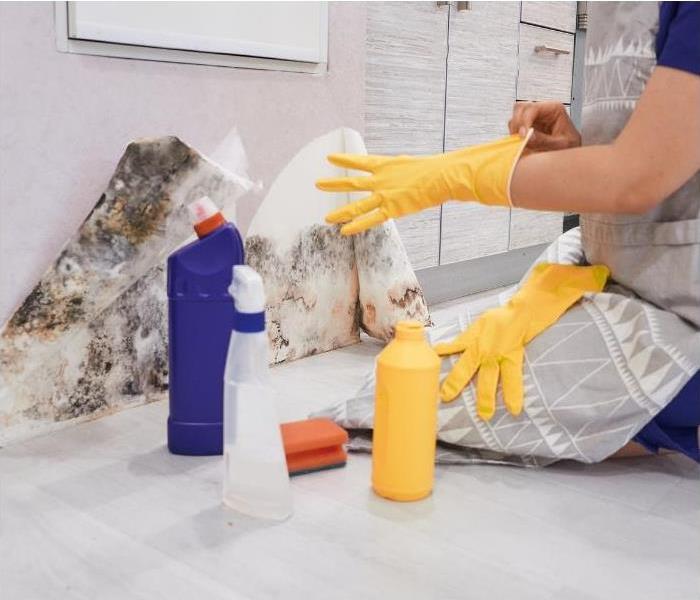 Mold is a common problem found in many households and can be a health hazard if left untreated.
Mold is a common problem found in many households and can be a health hazard if left untreated.
Key Takeaways:
- Mold can be detected using your five senses
- Musty odors and visible growth are common signs
- Moisture, humidity, and leaks can lead to mold growth
- Regular cleaning and maintenance can prevent mold issues
How Can I Spot Mold?
Mold is a common problem found in many households and can be a health hazard if left untreated. One of the most important things you can do to prevent mold growth in your home is to be aware of its presence.
While professional services like SERVPRO of South and Northwest Grand Rapids can help detect and remove potential dangers from hidden sources like air ducts and crawlspaces, mold is not always tucked away in difficult-to-reach places. In fact, you can use your senses to spot signs of a potential issue before it becomes more serious. Here’s how you can use sight, smell, touch, hearing, and taste to identify if there is an existing problem or if conditions are ripe for one down the line.
Sight
One of the most common ways to spot mold is to use your sense of sight. Mold can be black, white, green, or even pink in color, and it often appears as a fuzzy or slimy growth on surfaces like walls, ceilings, and floors. Look out for stains or discoloration on walls or ceilings, especially in damp or poorly ventilated areas. If you see any signs of mold growth, it’s important to act quickly and call a professional mold damage restoration company like SERVPRO of South and Northwest Grand Rapids to prevent further damage.
Smell
Another way to detect mold growth is to use your sense of smell. Mold has a distinct musty odor, described as earthy, damp, or even rotten. If you notice an unusual smell in your home, especially in areas with moisture or humidity, it could be a sign of mold growth. Pay attention to the scent and its intensity, as it can help you determine the extent of the problem. If you suspect mold is present, having it inspected and removed promptly is important.
Touch
You can also use your sense of touch to identify mold growth. If you notice any dampness or moisture on surfaces like walls, ceilings, or floors, it’s important to investigate further. Touch the surface to see if it feels slimy or fuzzy, as this can indicate mold. If you notice any unusual textures or growths on surfaces, it’s important to call a professional mold remediation company like SERVPRO of South and Northwest Grand Rapids to inspect and remove the problem. After touching these surfaces, please wash your hands thoroughly.
Hearing
While mold doesn’t make noise, you can use your sense of hearing to detect water leaks or other issues that can lead to mold growth. It could be a sign of a leak if you hear running water, dripping, or any other unusual noises coming from pipes or appliances. Water leaks are one of the most common causes of mold growth, so it’s important to address them promptly. By fixing leaks and addressing any water damage, you can prevent mold growth before it becomes a serious problem.
Taste
While you can’t actually taste mold, you can use your sense of taste to identify other potential sources of moisture. If you notice a musty or earthy taste in the air, it could be a sign of high humidity or moisture in the room. If you taste metallic or bitter flavors in your drinking water, it could be a sign of contaminants that can lead to mold growth. Identifying and addressing these issues early on can prevent mold growth and keep your home safe and healthy.
Final Thoughts
You can prevent potential health hazards and property damage by using your senses to spot mold growth. If you suspect that mold is present in your home, it’s important to take action immediately by calling a professional mold damage restoration company like SERVPRO of South and Northwest Grand Rapids.
Help, The Office Breakroom Has Mold!
8/17/2023 (Permalink)
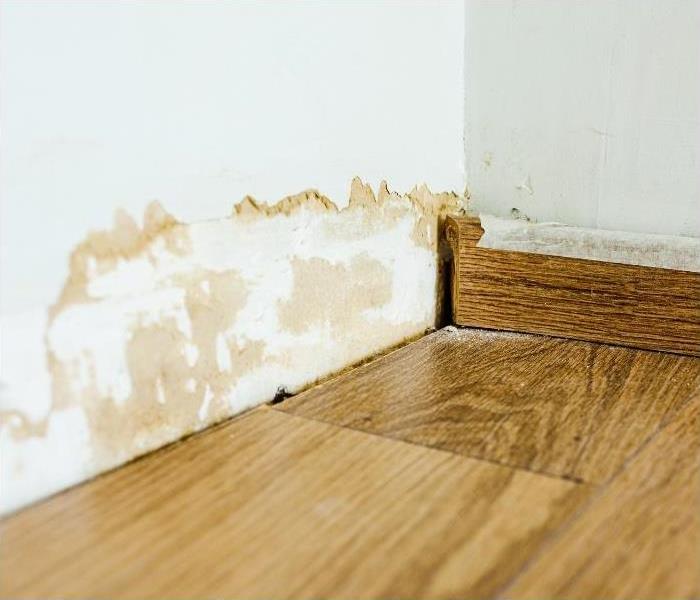 Mold can grow anywhere with moisture and warmth, and the breakroom is one of the most common areas where it can develop.
Mold can grow anywhere with moisture and warmth, and the breakroom is one of the most common areas where it can develop.
Key Takeaways:
- Mold can grow in any office and has serious health implications.
- Leaky pipes, high humidity, and poor ventilation are common causes of mold.
- Proper cleaning and maintenance are key to preventing and removing mold.
- Don’t ignore or underestimate mold in the office.
Mold in the office can be a serious problem that affects your employees' health and damages your company’s reputation. It can grow anywhere with moisture and warmth, and the breakroom is one of the most common areas where it can develop. Mold is not only unsightly, but it can also have severe health implications if left untreated. It is crucial to understand the sources of mold in the office, how to prevent it, and how to handle mold remediation in case of an outbreak. In this article, we will guide you through everything you need to know about mold in the office breakroom.
What Causes Mold in the Office Breakroom?
Mold in the office breakroom can occur due to several reasons. Some of the most common sources of mold include:
- Leaks and Water Damage: One of the primary causes of mold growth in the office breakroom is water damage. Water leaks from plumbing or the roof can create an ideal environment for mold growth.
- Poor Ventilation: Without proper ventilation, moisture can build up in the air, creating a humid environment that encourages mold growth.
- Dirty Appliances and Surfaces: If breakroom appliances such as coffee machines, refrigerators, or microwaves are not cleaned properly, they can become breeding grounds for mold.
- Improper Food Storage: Storing food for too long or not sealing it correctly can cause mold to grow on the food and eventually spread to other areas.
How to Prevent Mold in the Office Breakroom?
Preventing mold growth in the office breakroom is essential for maintaining a healthy and safe environment for employees. Here are some tips on how to prevent mold:
- Regular Cleaning: Regularly cleaning the breakroom, including all appliances, surfaces, and floors, can prevent moisture accumulation and mold growth.
- Proper Ventilation: Make sure the breakroom has adequate ventilation to keep the air circulating and prevent moisture buildup.
- Fix Leaks Immediately: Water leaks must be fixed promptly to prevent mold growth. If you notice any signs of leaks, such as water stains or discoloration, contact a professional for assistance.
- Proper Food Storage: Encourage employees to store food properly, discard expired food, and clean up spills promptly to prevent mold growth.
How to Handle Mold Remediation in the Office Breakroom?
If you notice mold growth in the office breakroom, it is crucial to address it immediately to prevent further spread and potential health risks. Here are the steps to take for mold remediation:
- Contact Professionals: Contact SERVPRO of South and Northwest Grand Rapids for professional mold inspection and remediation services. Mold can be hazardous to your health, and professional expertise is necessary to handle it properly.
- Identify the Source: Determine the source of the mold outbreak to prevent future growth. Fix any leaks or other sources of moisture and improve ventilation.
- Contain the Area: Isolate the affected area to prevent the spread of mold spores and protect employees.
- Remediate the Mold: Professional remediation involves removing the mold and any affected materials and cleaning the area with specialized equipment and solutions.
Final Thoughts
Mold growth in the office breakroom can be a significant health hazard for your employees and damage your company’s reputation. Preventing mold growth in the office breakroom requires regular cleaning, proper ventilation, fixing leaks, and proper food storage. If you notice mold growth in the office breakroom, contact SERVPRO of South and Northwest Grand Rapids for professional mold remediation services. Ignoring mold growth can lead to severe health consequences, so act immediately.
The Different Types of Mold and Their Health Effects
8/9/2023 (Permalink)
Key Takeaways:
- Mold is a common problem that can have serious health effects.
- Different types of mold have different health impacts.
- Preventative measures can be taken to avoid mold growth.
- Professional mold remediation can effectively remove mold from your home.
Mold is a common problem that many homeowners face. It is not just unsightly, but can also be hazardous to our health. Knowing how to identify and prevent different types of mold can help protect our homes and loved ones from its harmful effects.
Understanding Mold
Mold is a type of fungus that thrives in warm, humid environments. It grows on organic matter, such as wood, paper, and fabric, and can cause a range of health issues. Mold reproduces by releasing spores into the air, which can be inhaled, ingested or come into contact with the skin. These spores can trigger allergic reactions, respiratory problems, and other health issues.
What Are the Common Types of Mold?
There are several types of mold, each with its own unique characteristics and health effects.
Cladosporium
Cladosporium is a common type of mold found both indoors and outdoors. It is often found in areas with high moisture, such as bathrooms and basements. Exposure to Cladosporium can cause allergic reactions, asthma attacks, and other respiratory problems.
Aspergillus
Aspergillus is a type of mold that can grow on walls, floors, and other surfaces. It is commonly found in homes with water damage, and can cause respiratory problems, allergic reactions, and even infections.
Stachybotrys
Stachybotrys, also known as black mold, is a type of mold that is commonly found in homes with water damage. It is known for its dark green or black color and slimy texture. Exposure to Stachybotrys can cause serious health problems, including respiratory problems, allergic reactions, and even neurological issues.
Penicillium
Penicillium is a type of mold that can grow on food, wallpaper, and other surfaces. While it is not as harmful as other types of mold, it can still cause allergic reactions, respiratory problems, and other health issues.
Preventing Mold
Preventing mold growth is essential for maintaining a healthy home environment. Here are some tips to prevent mold from growing in your home:
- Keep your home dry: Address any leaks or moisture problems immediately, and make sure that your home is properly ventilated.
- Clean regularly: Regularly cleaning your home can help prevent mold growth by removing any potential food sources for mold, such as dust and dirt.
- Control humidity levels: Keep your home’s humidity levels below 60 percent to prevent mold growth.
- Address water damage: If your home has experienced water damage, it’s important to address it as soon as possible to prevent mold growth.
Mold Remediation
If you suspect that you have mold in your home, it’s important to take action immediately. Mold can spread quickly and cause serious health issues if left untreated. SERVPRO of South and Northwest Grand Rapids can help identify and remove mold from your home safely and effectively.
Final Thoughts
Understanding the different types of mold and their health effects is essential for protecting your home and family. By following these preventative measures and taking action if you suspect mold growth in your home, you can keep your home healthy and safe.
3 Spots Mold Loves To Hide In Your Home
8/1/2023 (Permalink)
Key Takeaways
- Mold loves dark, damp, and poorly ventilated areas like the attic and basement.
- Bathrooms are another common area for mold growth due to moisture and poor ventilation.
- Kitchens are also vulnerable to mold growth due to water leaks and food spills.
- Regular inspections and prompt remediation can prevent mold growth and keep your home safe and healthy.
Mold is a common problem that many homeowners face, and it can be quite challenging to get rid of once it grows. Not only can it cause health problems, but it can also lead to property damage if not addressed in time. The key to preventing mold growth and controlling its spread is to understand where it likes to hide. In this article, we’ll discuss the top 3 spots where mold loves to hide in your home and how to prevent and eradicate it.
1. Attic and Basement
Mold loves to grow in dark, damp, and poorly ventilated areas. That’s why the attic and basement are the perfect breeding grounds for mold. These areas often have poor air circulation, and if there’s a water leak, condensation, or high humidity, mold can quickly spread. It’s crucial to inspect your attic and basement regularly for any signs of mold growth. Look for black, green, or white spots on walls, ceilings, and floors. If you notice any musty smells or dampness, it’s a sign that mold is present.
Prevention is key when it comes to controlling mold growth in the attic and basement. Ensure proper ventilation in these areas by installing fans and vents. Keep the humidity level below 60% by using a dehumidifier. Also, fix any leaks or water damage as soon as possible. If you do find mold in your attic or basement, don’t try to tackle the problem yourself. Instead, call a professional mold remediation company like SERVPRO of South and Northwest Grand Rapids to handle the job.
2. Bathroom
Bathrooms are another common area where mold likes to grow. The combination of moisture, warmth, and poor ventilation creates an ideal environment for mold to thrive. Pay close attention to areas around the sink, shower, and bathtub, as these are the most likely spots for mold growth. Check for any discoloration on tiles, grout, or caulking, and if you notice any, it’s a sign that mold is present.
To prevent mold growth in your bathroom, keep the area well-ventilated by using an exhaust fan or opening a window. Wipe down wet surfaces after use and fix any leaks or water damage immediately. Also, regularly clean your bathroom with a mold-killing cleaner to prevent the growth of mold spores. If you do find mold in your bathroom, don’t try to remove it yourself, as it can release spores into the air. Instead, call a professional mold remediation company like SERVPRO of South and Northwest Grand Rapids to handle the job.
3. Kitchen
The kitchen is another area where mold can grow, especially around the sink, dishwasher, and refrigerator. Water leaks from these appliances can create damp environments that are perfect for mold growth. Also, food spills, crumbs, and debris can attract mold spores, leading to growth.
To prevent mold growth in your kitchen, keep the area clean and dry by wiping up spills and crumbs immediately. Fix any leaks or water damage as soon as possible, and ensure proper ventilation in the area by using an exhaust fan. Also, regularly check your appliances for leaks and mold growth. If you do find mold in your kitchen, don’t try to tackle the problem yourself. Instead, call a professional mold remediation company like SERVPRO of South and Northwest Grand Rapids to handle the job.
Final Thoughts
Mold growth can be a frustrating and dangerous problem to deal with. To prevent and control mold growth, it’s essential to understand where it likes to hide. Monitor your attic, basement, bathroom, and kitchen for any signs of mold growth.
The Importance of Air Quality Testing in Mold Remediation
4/30/2023 (Permalink)
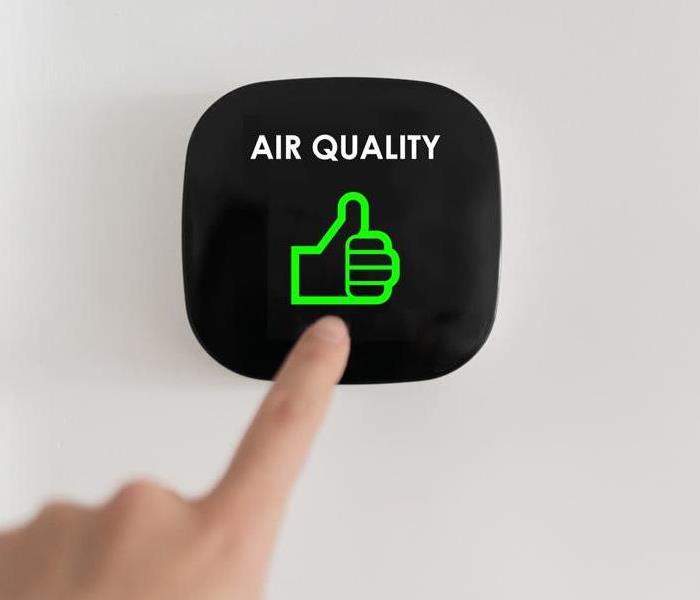 In order to improve your air quality, a mold remediation team is essential after damage.
In order to improve your air quality, a mold remediation team is essential after damage.
Mold is a pesky problem that can cause health issues and damage property, so it's essential to take the necessary steps for its complete removal. When it's time to remediate mold, the process requires more than simply wiping down surfaces – air quality testing is essential. That's why it's important to have a highly qualified mold remediation team on your side.
Air quality testing is a critical step in mold remediation to ensure all traces of the problem are eliminated and future growth is prevented.
What Is Air Quality Testing?
Air quality testing is the process of checking air samples to measure the levels of mold spores and other contaminants in a given space. This can tell us if the mold is still present, how much is present, and where it's located. It also allows experts to determine which areas need to be cleaned and what cleaning solution should be used to safely remove the mold.
Why Is Air Quality Testing So Important?
Air quality testing is essential for an effective and safe mold remediation process. Without it, the mold could spread to other parts of the property where it wasn't previously present. Air quality testing can help identify potential sources of mold and determine if the air quality in the contaminated area is safe.
The first step in a successful mold remediation process is to identify the source of the problem. Mold often comes from high humidity levels, poor ventilation, and water damage. Air quality testing can identify the type of mold present in the air and any other potential sources of contamination. Air quality testing also helps to determine the concentration of mold spores and other air contaminants.
Once the source of the mold has been identified and the air quality tested, the next step is to identify what type of mold it is. Different types of mold require different levels of remediation, and air quality testing will help to determine what type of remediation is needed.
Air sampling can also monitor the air quality during the remediation process. This helps ensure that no new mold spores are introduced or allowed to remain in the air after the remediation process is complete. This can also help determine if any remaining mold spores need to be removed before the area is deemed safe again.
Finally, air quality testing can help identify any health-related risks. Some types of mold can cause allergic reactions and other health issues in humans and animals. Testing the air quality ensures that your home or business is safe for all occupants.
The importance of air quality testing during a mold remediation process can't be overstated. It can also help to identify any potential health risks related to the presence of mold. If you suspect mold presence in your home or business, it's essential to contact a professional remediation team right away. They'll be able to assess the situation, identify the source of the problem, and take the necessary steps for its removal.
At SERVPRO of South and Northwest Grand Rapids, our experienced mold remediation team is here to help. We have the knowledge and expertise necessary to do the job and remove mold. Our team can also provide air quality testing to ensure all traces of the problem are eliminated and prevent its return. Contact SERVPRO of South and Northwest Grand Rapids at (616) 662-9700 with any questions, and our team will be happy to assist. We're here to help you restore your home or business to a safe and healthy environment.
Do you have any questions or concerns about air quality testing and mold remediation? If so, reach out to SERVPRO because we're here to help!
The Different Types of Mold and How They Can Affect Health
4/16/2023 (Permalink)
 The only things growing in your home should be under your watchful eye.
The only things growing in your home should be under your watchful eye.
Mold, usually found in damp, dark places, can cause serious health problems when breathed in or touched. It's essential to know its various types and how they affect your health so you can take proper precautions to protect yourself and your family.
Types of Mold
Mold can range from a black slimy substance to a bright green fuzzy growth. While they may look different, all types of mold have the potential to cause adverse health effects. Knowing the types of mold and the potential health problems associated with them can help you make informed decisions about your home and environment.
The most common types of mold are:
Black Mold
Black mold is a sinister-sounding name for Stachybotrys chartarum, a type of fungus found in damp or wet areas. It is usually black or dark green and can be easily spotted in places with high humidity, such as washrooms, laundry areas, and basements. Not only does it cause unsightly discoloring, but it can also cause various health issues.
Black mold produces toxins known as mycotoxins that can cause various health problems if inhaled. Symptoms may include congestion, watery eyes, cough, irritability, sneezing, headaches, and difficulty in breathing. In some cases, it can even cause respiratory damage and neurological disorders. It's important to have the affected areas treated by a professional as soon as possible.
Mildew
Mildew is a type of fungi that often grows on fabrics, furniture, and other household items in warm and humid environments. These fungi are usually black or gray but can also be white or yellow, depending on their growing area. Mildew is a much less serious form of mold, but it can still cause unpleasant odors and damage to your home. Inhaling mildew spores can cause many health issues, including headaches, coughing, sneezing, and congestion. Additionally, long-term exposure can lead to more serious respiratory illnesses.
To prevent the spread of mildew, it's important to keep your home clean and dry. Make sure to clean any wet areas immediately, as mildew will often form in these places. Additionally, using a dehumidifier can help keep your home's environment dry and free of mold and mildew.
To remove mildew, use a cleaner specifically designed for mildew. This will help to eliminate the odor and prevent it from coming back. Also, make sure to ventilate any areas that have been affected.
White Mold
White mold is the most common type and is usually found in damp, humid places. It can cause various health symptoms, including allergic rhinitis, sinus inflammation, and asthma. White mold is also capable of producing mycotoxins, which can affect the respiratory system, skin, and eyes.
To prevent white mold from growing, it's important to keep your home dry and well-ventilated. Additionally, using a dehumidifier can help reduce the moisture levels in your home and make it less hospitable for mold growth.
Green Mold
Green mold is a type of mold that usually grows in damp, dark areas and is often found in bathrooms and basements. Exposure to green mold can cause allergies and asthma attacks, respiratory problems, skin irritation, and even increase the risk of developing cancer.
If you discover green mold in your home, it's important to act quickly. Call a certified mold specialist to assess the situation and create an action plan. To prevent green mold from spreading, open windows and run dehumidifiers. Additionally, clean and disinfect all non-porous surfaces in the area with a solution of water and bleach.
No matter what type of mold you encounter, it's important to take the proper steps to eliminate and prevent it from returning. If you're unclear about the situation or need assistance, contact SERVPRO of South and Northwest Grand Rapids at (616) 662-9700. We're here to help you eliminate mold and keep your home clean and safe.
So don't wait; call us today and let us help you eliminate mold and keep your family safe!
The Role of Dehumidification in Mold Remediation
2/27/2023 (Permalink)
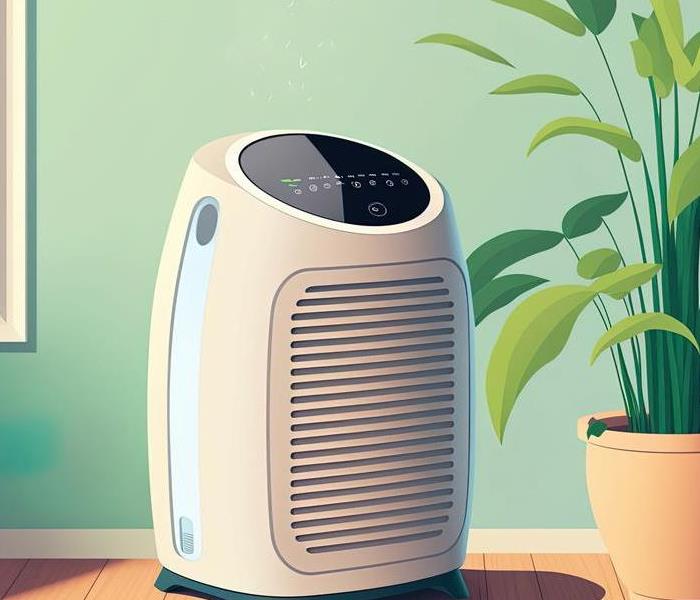 Even a small dehumidifier can be a great start if you want to reduce in-home mold growth.
Even a small dehumidifier can be a great start if you want to reduce in-home mold growth.
Mold is a serious problem that can cause health issues and damage your property. Fortunately, you can control the growth of mold and prevent it from spreading. One of these steps is dehumidification, which helps reduce humidity and moisture levels in an environment to control the growth of mold. In this article, we'll discuss the role of dehumidification in mold remediation and how it can help keep your home or business safe from mold.
What Is Dehumidification?
Dehumidification is an easy process of removing excess moisture from an indoor environment. This can be done through mechanical ventilation, air conditioning, or dehumidifiers. By reducing the humidity in the space, mold growth can be mitigated and even prevented.
How Does Dehumidification Help with Mold Remediation?
Moisture is a key factor that enables mold to form and flourish. Dehumidifiers can reduce the humidity, which can control the growth and spread of mold. It can also reduce the risk of future mold growth by reducing the number of spores in the air. A reduced spore count can help keep the area safe from future mold problems. The fewer spores in the air, the less likely they cause health problems such as allergies and asthma. Dehumidifiers can also help keep the air clean, reducing dust mites and other allergens known as triggers of allergies and asthma.
Dehumidification can reduce the visible signs of mold growth, such as discoloration on walls and ceilings. This can help speed up the remediation process as there will be less need to scrub off visible mold growth. Dehumidification aids in speeding up the drying process, which can help prevent mold growth and reduce the amount of time required for remediation.
If you're dealing with a mold issue, dehumidification can be a helpful tool in the remediation process.
What Other Steps Should Be Taken During Mold Remediation?
In addition to dehumidification, several other important steps should be taken during mold remediation. These steps include identifying the source of the mold, cleaning and sanitizing affected surfaces, and repairing any areas damaged by the mold.
Identify and Address the Source
The most important step in mold remediation is to identify and address the source of the problem. Often, this may involve finding and fixing a plumbing or water leak or finding and addressing any other factors contributing to mold growth.
Cleaning and Sanitizing Surfaces
Once the source of the mold has been addressed, it is important to clean and sanitize all affected surfaces. This should include any areas where the mold is growing and any surfaces that may have been exposed to the spores. It is important to use cleaning solutions specifically designed for mold removal and to follow all safety instructions when using them.
Fan and Venting
Using fans and ventilation systems can help reduce humidity in the space, which can help to inhibit mold growth. It is important to ensure that all fans and ventilation systems are kept in good working order. If any of the fans or systems are not working properly, this can increase the likelihood that mold will grow in the space.
Repair Damaged Areas
Finally, it is important to repair any areas damaged by the mold. This may include replacing drywall, insulation, or other materials compromised due to mold.
It is also important to take necessary precautions to prevent future mold growth. This can include things like making sure water sources are properly sealed and insulated, using air purifiers and dehumidifiers regularly, and ensuring that all areas of the home or business are properly ventilated.
If you're dealing with a mold issue, don't hesitate to contact the professionals at SERVPRO of South and Northwest Grand Rapids. Our experienced staff will help you through any mold remediation project. Call us at (616) 662-9700 with any questions, and our team will be there to help.
Is Mold Really in Every Home?
11/10/2022 (Permalink)
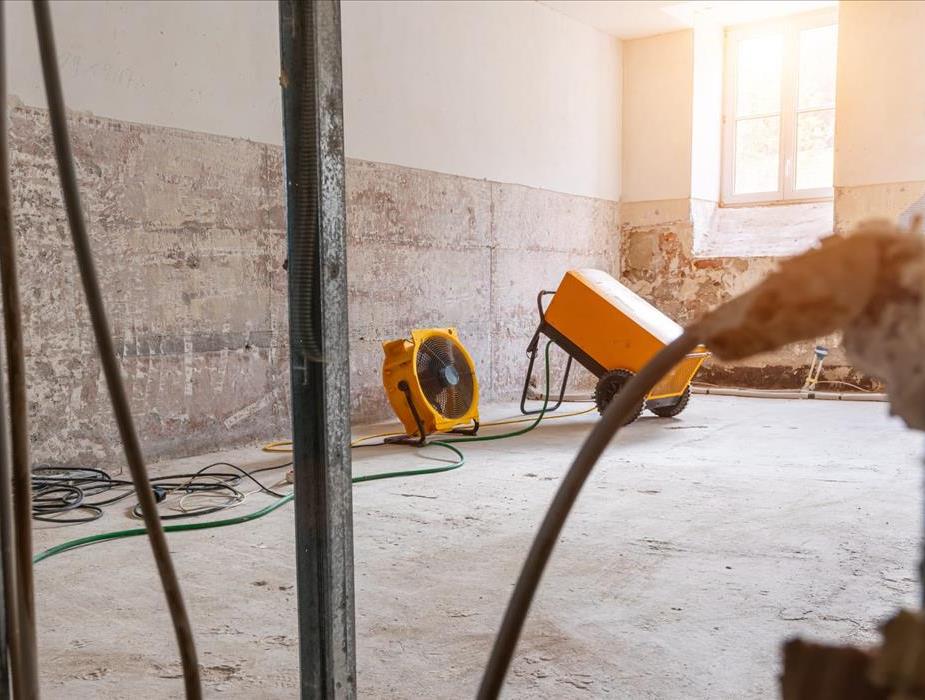 Mold removal can be a tough task, taking repairs down to the studs, only to be built back up.
Mold removal can be a tough task, taking repairs down to the studs, only to be built back up.
Of the many pests that can plague a house, mold is one of the most common. This is large because it requires very little for mold to grow and being the resilient pest that it is, and it can be very difficult to get rid of it. Ideally, you should go for a deep clean of the property to really get rid of the mold.
Mold spreads through spores. The spores are tiny and light, so they have easily carried around in the air. Mold might seem like a minor problem, but it can be a very destructive pest if it is left untreated. Here is how you can manage the situation.
Where Can I Find Mold?
Certain areas of the house are more likely to develop a mold infestation. Like any other living organism, water is a basic requirement for mold to live. Any place that has water or even a high level of humidity can be a breeding ground for mold.
Places such as the crawl space, near a pool, a damp basement, or any area that has been recently affected by flooding can be good places for mold to grow. If you have indoor plants, then there will be more humidity in the house, which can also attract mold.
Mold can latch onto nearly any surface and feed off it. Things like cardboard, drywall, paint, rugs, leather, wood, upholstery, and even insulation are places where mold can start growing if there is enough moisture in the environment for it to survive.
How Did I Get Mold?
You might clean your house regularly, but that doesn't mean you can get rid of all the mold spores. These little spores can get in through your ventilation system, windows, and doors, or they can latch on to clothing and belongings and enter the house when you come in with them. Once inside, the spores may stay dormant for weeks or months until they get the right conditions to develop.
They can easily be moved around the house through people and pets. If you recently had something that was affected by mold and you threw that item away, the spores from that item may have spread to other parts of the home. Spores can also distribute themselves through dust, so any contaminated dust in the home can also start a mold infestation.
Signs Of Mold
The best solution is to detect mold before it becomes a major problem. In the right conditions, mold can grow extremely quickly and can easily eat away at the surface that it grows on. If this happens to be a valuable item or the structure of your home, it could lead to a lot of problems.
One of the biggest signs is the odor that mold creates. Sometimes, this could smell like rotten eggs; in other cases, it might just smell like rubbish or like something is decaying. The odor depends on the surface that the mold is on. If anything smells off, get it inspected.
The other major sign is fungus growth. Usually, you can spot fungus growth on carpets, furniture, clothing, or walls and floors. It can range from white to green to black, depending on the particular mold.
Another sign is an increase in allergies and, specifically, breathing-related problems. If you have anyone in the house with asthma or a similar breathing condition, the allergy will flare up and won't go away because the mold spores are still in the air.
Conclusion
The best solution is to get a professional team, such as the mold removal experts at SERVPRO, to help you with this situation. They will help you remove the mold properly and disinfect the area, so there is no possibility of the mold returning. The SERVPRO team has plenty of experience working with mold infestations, and they can help you get the issue resolved and prevent it from spreading.
What Are The Most Common Places For Mold Growth In Your Grand Rapids Business?
11/16/2021 (Permalink)
There are many familiar places in your Grand Rapids business that are highly susceptible to mold growth. It’s wise to regularly inspect the most commonly found areas to avoid mold colonization in your commercial business location. Doing so will help you avoid the damage and effects to health that mold can pose.
What Areas Should I Put On My Mold Inspection List For My Grand Rapids Commercial Enterprise?
We recommend that you assess your property and compile a list of places where mold is most likely to be found. Dark or poorly lit and damp areas are always susceptible to the establishment of a mold colony, such as:
- Crawl spaces
- Ductwork
- Closets
- Attics
- Sinks
- Toilets
- Faucets
- Drains
- Plumbing fixtures
A professional mold remediation company like SERVPRO can inspect the most vulnerable areas of your Grand Rapids business and schedule cleaning and remediation services to keep your commercial enterprise mold-free.
What Are Some Important Things To Know About Mold?
- Mold is present almost everywhere, indoors and outdoors.
- Mold spores are microscopic, float along in the air, and may enter your home through windows, doors, or AC/heating systems or even hitch a ride indoors on your clothing.
- Mold spores thrive on moisture. Mold spores can quickly grow into colonies when exposed to water. These colonies may produce allergens and irritants.
- Before mold remediation can begin, you must address any sources of water or moisture. Otherwise, the mold may return.
- Mold often produces a strong, musty odor, and that odor can lead you to possible mold problem areas.
- Even higher-than-normal indoor humidity can support mold growth. Keep indoor humidity below 45 percent.
The SERVPRO of South & Northwest Grand Rapids team is specifically trained to handle mold remediation, and we’re available 24 hours a day, seven days a week to help. You can contact us at (616) 662 9700 for a mold inspection and restoration of your property back to its mold-free condition. In addition to our mold remediation services, we handle biohazard cleaning, odor removal, deodorization, and more!
We can get your home or business Certified: SERVPRO Cleaned, too. This franchise is independently owned and operated.
Storm Damage Prevention Advice for Your Home
7/16/2019 (Permalink)
 Prepare for storms before they hit!
Prepare for storms before they hit!
No homeowner gets to choose when a storm is headed his way, but a smart homeowner can choose to be ready for any kind of inclement weather. Today we’re sharing some advice for you that will help to reduce and prevent storm damage from adversely affecting your home and property.
- Roofing. Regular roofing inspections will help you identify issues like minor leaks or missing shingles, allowing you to get them repaired right away. This will help you avoid serious structural damages when severe weather arrives. If your home does suffer storm damage, you can call us here at SERVPRO of South and North West Grand Rapids to schedule repair and cleanup.
- Landscaping. Hard winds and heavy rain will accompany the storms of summer, and dead tree branches, unhealthy vegetation, and unstable trees can cause damage to your property under these conditions. We recommend regularly trimming your plants and trees, removing dead or dying limbs and plants wherever necessary. Replace plantings if some are removed by storms to prevent erosion from heavy rains, too.
- Storm Windows. Invest in high-quality storm windows to prevent leaks and other storm damage. These do a great job of protecting window glass, adding an extra layer of safety to your home’s interior against the wind and rain.
- Entrance and Parking. Keep your driveway and your entrance in good repair, replacing buckling concrete or stepping stones and filling in potholes ahead of inclement weather. Your friends and family’s safety is important to you, we know, and this important step goes a long way towards ensuring that no one gets hurt during the storms of summer.
- Basements. Keep an eye on all low lying areas of your home, like your basement. This is where leaks will show up and often go unnoticed, so taking a close look before and after wet weather will help you spot a problem right away.
For more tips on preventing storm damage, contact us here at SERVPRO of South and North West Grand Rapids for assistance. We specialize in cleanup from water and fire damage, no matter the size. We are also mold remediation specialists. Visit us online for a complete list of our services. You can call us at (616) 662-9700 at any hour for assistance. We’re available 24/7.
The 3 Most Common Places to Check for Mold Growth
6/3/2019 (Permalink)
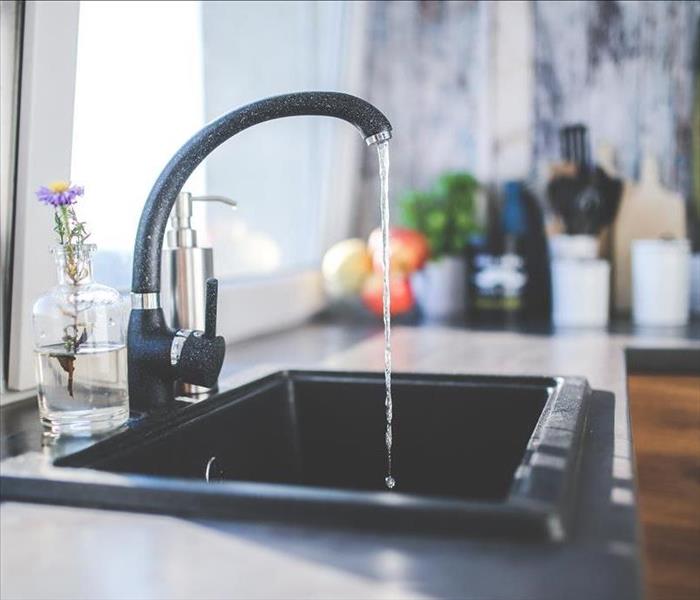 Make it a habit to regularly check under your sink for mold growth.
Make it a habit to regularly check under your sink for mold growth.
Mold. The mere mention of the word brings to mind all the unpleasant aspects of this organism - the unsightly black, red, or gray spots that appear, its odors, and the allergic reactions that many people experience when mold moves in. We all know that it can be very beneficial, though, by helping to create various cheeses and alleviate sickness, for example. But when we find it in our home or business, we forget about its benefits.
Keeping an eye out for mold growth in your house or place of business is a great way to prevent a colony from becoming established, protecting your possessions and the people you care about from being negatively impacted by its arrival.
Here are three of the most common places you will find mold:
Under The Sink. Sinks often spring small leaks, and we may not even realize it for quite some time. A tiny leak in the darkness of a cabinet or at the base of a sink pedestal that goes unnoticed is prime real estate for a mold colony. When you are doing your regular inspections, this type of space is the first place you should check for mold growth.
Behind Appliances. The refrigerator, dishwasher, and washer are heavily used household items that involve large amounts of water, of course. They can also spring small leaks easily, and unless you look behind them or under them, you might never notice. These areas are also perfect places for mold spores to settle down.
Basements/Low-Lying Areas. Low-lying areas and basements can often experience damp conditions, especially during warm, wet weather. Windows that are not properly caulked, or roofing and rain gutters that haven’t been properly maintained, can allow water to reach these areas and create the dampness that mold just loves to inhabit.
When it comes to mold, remember that the SERVPRO of South and North West Grand Rapids team is here to help. We are mold prevention and remediation specialists! We are also experienced in the areas of fire and water damage, too, and we’re available 24 hours a day, 7 days a week.
Tips to Prevent Mold Damage in Your Home
4/24/2019 (Permalink)
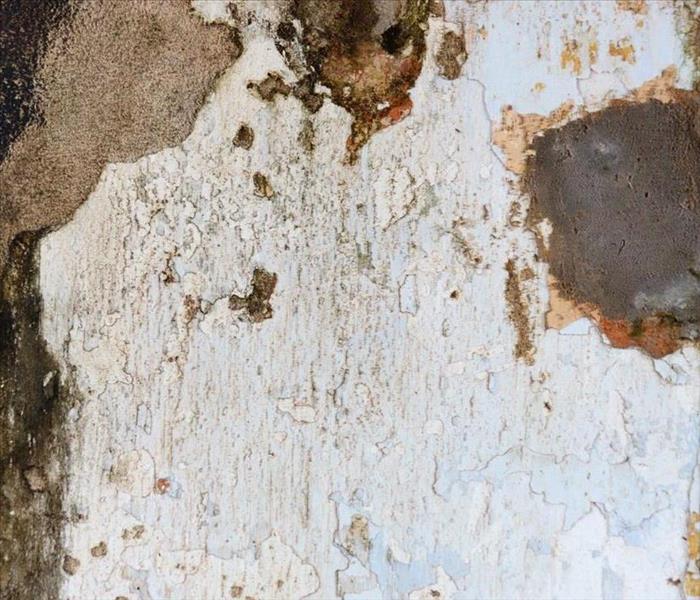 Mold can wreak havoc on your home. Take preventive measures today!
Mold can wreak havoc on your home. Take preventive measures today!
The very mention of the word “mold” is enough to make anyone uncomfortable. We all know that mold can be beneficial, such as when used in penicillin or the making of cheeses, and we are aware of its role in the decomposition of organic matter, but when it comes to finding it in our homes, that is a different matter!
Mold spores spread easily and can never be completely eradicated. It can grow almost anywhere, too: carpet, clothing, food, and other places we never see. It is very difficult and costly to manage once it is detected. It can also produce irritants, allergens, and even toxins that can compromise your health--that’s what makes it such a serious matter when it takes hold in our living spaces.
Here are some tips to help you prevent mold damage in your home:
Identify issues. You can't mold-proof your home, but you can make it mold-resistant. Do an audit of your home and determine the main weak spots. Does your basement flood? Do you notice frequent condensation on an upstairs window, or perhaps a water stain on the ceiling from a persistent leak? Preventing mold from growing or spreading might be as simple as removing carpet in a damp basement, installing mold-resistant products, or repairing damaged gutters. Whatever the case may be, address the problem now.
Dry wet areas immediately. Mold can't grow without moisture, so take care of wet areas right away. Any wet areas should be dried within 24 to 48 hours. Even everyday wet areas need attention: don't leave wet items lying around the house, and make sure to dry the floor and walls after a shower. Don't leave wet clothes in the washing machine, where mold can spread quickly. Hang them to dry outside or in areas with good air circulation.
Proper ventilation. Make sure an activity as simple as cooking dinner, taking a shower, or doing a load of laundry doesn't invite mold by providing proper ventilation in your bathroom, kitchen, laundry room, and any other high-moisture area. Use A/C units and dehumidifiers, but make sure they don’t produce moisture themselves by checking them periodically and cleaning them as directed by the manufacturer.
Use mold-resistant products. Use mold-resistant products like mold-resistant drywall or mold-resistant Sheetrock, and use mold inhibitors for paints when building or renovating.
Direct water away from your home. If the ground around your home isn't sufficiently sloped away from the foundation, water may collect there and seep into your crawlspace or basement. You may be experiencing leakage just because your gutters are full or damaged. Have your roof gutters cleaned and inspected regularly to make sure they are sending water away from your structure. Repair them as necessary, and keep an eye out for water stains after storms that may indicate a leak has started.
There is no one-size-fits-all solution when it comes to mold prevention. Knowing what works for your climate and your home is an important first step, and always keep in mind that the SERVPRO team at SERVPRO of South and North West Grand Rapids is here to help with any mold issues. We also handle damages from fire or water, such as flooding. Contact us today by phone at (616) 662-9700, or visit us on our website.
Southwest Grand Rapids Take control of the Mold situation.
5/3/2018 (Permalink)
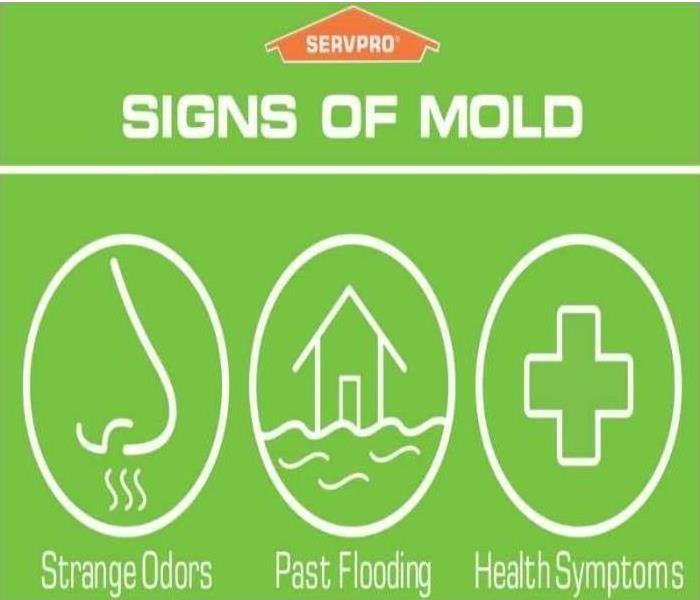 Mold is serious, let us take care of it for you.
Mold is serious, let us take care of it for you.
Moisture control is the key to controlling mold. Take time to check for water damage in your home, especially in your basement.
The CDC also recommends keeping the humidity level in your house below 50 percent. Use an air conditioner during humid months. Make sure to check the ventilation in the kitchen and the bathroom. Open a window or turn on a fan when showering. Do not carpet bathrooms and consider using mold inhibitors that can be added to paints.
If you see moisture building up, act quickly and dry the area. If you have any water leaks, whether it is coming in through the roof, or from a pipe or the ground, patch it up immediately.
Another thing to keep in mind: The recent trend in housing construction has been for "tight" houses that allow little air circulation. While they can be more energy efficient, they also encourage mold, because water that gets trapped inside walls may not be able to escape. In other words, the house doesn't "breathe."
While it is possible to have your home tested for mold, the CDC says reliable testing can be expensive. It also says that standards for judging what is and what is not an acceptable or a tolerable quantity of mold have yet to be established. Also, if you do have your home tested, chances are you won't get back the results for a couple of weeks. During that time the problem could get even worse.
SERVPRO® of Southwest Grand Rapids can mitigate and remediate the original damage, providing you with peace of mind while helping make it “Like it never even happened.” Call us today at 616-662-9700.
Southwest Grand Rapids Know your insurance coverage for Mold.
5/3/2018 (Permalink)
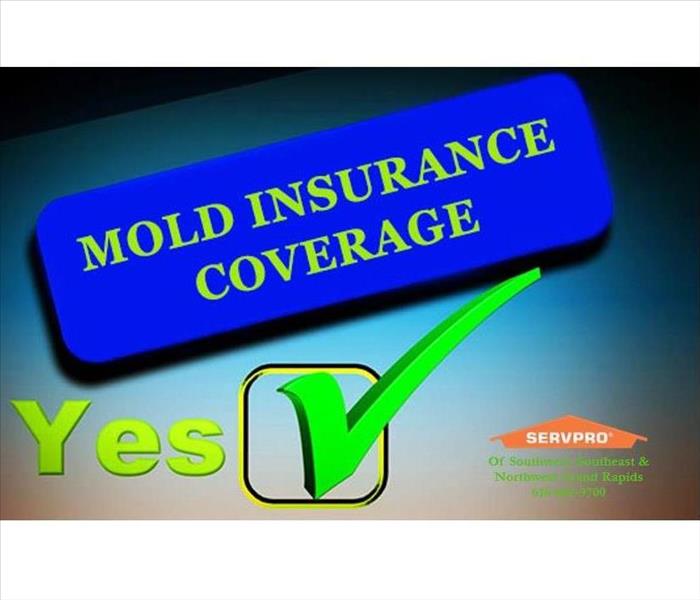 Check with your carrier and learn your options about Mold coverage.
Check with your carrier and learn your options about Mold coverage.
From the insurance perspective, damage from mold, like rust, rot and mildew is excluded from the typical homeowner’s policy.
The Insurance Information Institute says mold is covered under the homeowner’s policy, only if it is the result of a covered danger. For example, the costs of cleaning up mold caused by water from a burst pipe are covered. But mold that develops from, say, humidity or flooding is a maintenance issue that the property owner is responsible for.
The insurance industry argues that in order to keep homeowners insurance affordable and available to the masses this coverage wound up being excluded. If the policyholder does want mold coverage there is going to be an additional premium for it.
One thing to keep in mind is that there have been fewer claims recently. But critics say that is simply because insurers no longer cover the damage, so if it's not covered people do not put in claims.
SERVPRO® of Southwest Grand Rapids can mitigate and remediate the original damage, providing you with peace of mind while helping make it “Like it never even happened.” Call us today at 616-662-9700.
Southwest Grand Rapids Get the facts on mold.
5/2/2018 (Permalink)
 Mold is a fact of life, but there is bad mold. Know the facts!
Mold is a fact of life, but there is bad mold. Know the facts!
Mold is not a plant or an animal. It is a type of fungus and a fact of life. According to the Center for Disease Control (CDC), there is always a little mold everywhere and one cannot avoid being exposed to it. It grows year round and is found both inside and outside. Mold has existed for at least 400 million years and doesn't need much to grow. All it takes is moisture, warmth and food.
If you are concerned, make sure to check out areas in your home where humidity and moisture levels are high. This includes bathrooms, kitchens, basements, and in walls where water from leaky pipes can accumulate.
The National Association of Home Builders says that in just 48 hours, a moist environment combined with the right room-temperature conditions can lead to mold growth. While you cannot keep mold spores completely out of your home, regular cleaning can often prevent severe problems before they arise. Log onto the U.S. Environmental Protection Agency's Web site for more details at epa.gov.
SERVPRO® of Southwest Grand Rapids can mitigate and remediate the original damage, providing you with peace of mind while helping make it “Like it never even happened.” Call us today at 616-662-9700.
Southwest Grand Rapids, Who can clean up Mold?
4/26/2018 (Permalink)
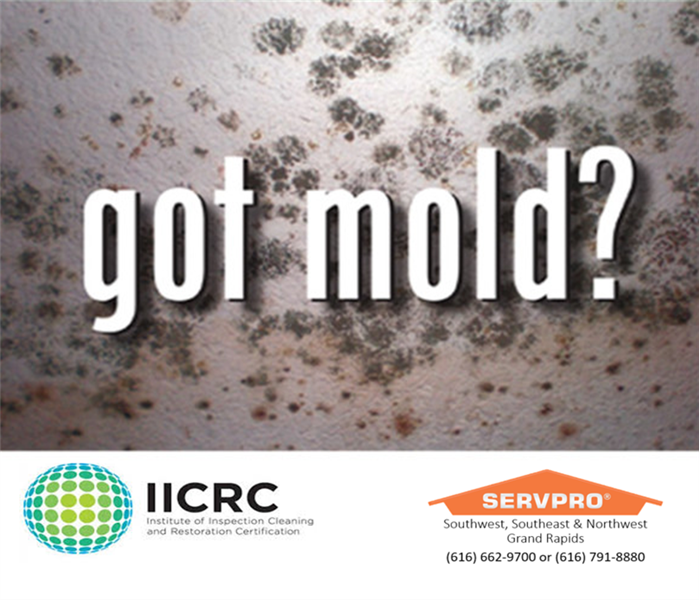 We are trained and certified to mitigate mold.
We are trained and certified to mitigate mold.
If you have mold, determining who should clean it up depends on several factors.
One consideration is the size of the mold problem. A little bit of mold in your shower is nothing to worry about. Frequent maintenance with bleach and water can do the trick. If the mold problem covers less than 10 square feet, chances are you can handle the cleanup yourself.
When handling or cleaning moldy materials wear gloves, goggles, and dress in long sleeves. If you want to limit your exposure to mold, you may want to consider wearing a respirator. They are available at many hardware stores for about $12 to $50. Also make sure the room is properly ventilated. Open a window, and get some fresh air.
If the problem extends beyond 10 square feet, consult the EPA's guide: Mold Remediation in Schools and Commercial Buildings. Although it focuses on larger buildings, the advice applies to other areas as well. For a free copy call 1-800-438-4318.
If you are developing a more severe mold problem you will most likely not only be able to see it, but also smell it. Have you ever walked into a room with a musty odor? Chances are you smell mold. Keep in mind, sometimes you will not be able to see the mold because it may be hidden on the back of the wallpaper, tile, drywall or even underneath the carpet.
If you detect mold on the surface or on some of your items, the items may be discolored or looked smudged and blotched. When hiring a professional to do the cleanup, make certain you are dealing with someone who is trained in this type of cleanup.
You'll want to be very careful when hiring someone to do the job. SERVPRO® of Southwest Grand Rapids is trained in Mold mitigation, with 25 years of experience. Don’t get stuck with an inexperienced remediator who ends up botching the job. And remediation can be very costly, ranging from a couple of hundred dollars to more than $100,000. Also make sure to check references and a company's complaint record with the Better Business Bureau.
One other point: non-porous items such as glass and hard plastics that are still in good condition after the mold has been removed can be reused after a thorough cleaning. But items such as carpeting, clothing and insulation should be thrown out.
SERVPRO® of Southwest Grand Rapids can mitigate and remediate the original damage, providing you with peace of mind while helping make it “Like it never even happened.” Call us today at 616-662-9700.
Mold clean-up process
3/30/2018 (Permalink)
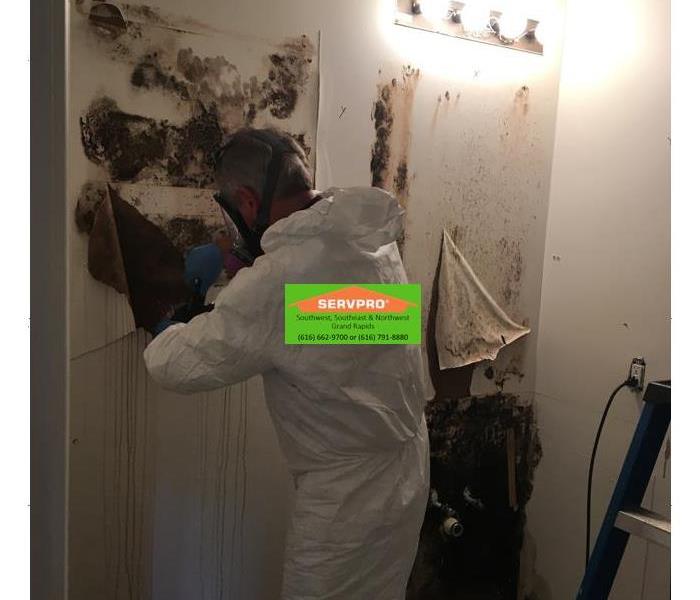 Mold likes to hide, let us take it away!
Mold likes to hide, let us take it away!
When there’s a water intrusion, mold can quickly become a problem in your home or business. Mold can affect your health and can also cause significant damage to your property. Fortunately, SERVPRO® of Southwest Grand Rapids Professionals have the training, protective gear, and specialized equipment necessary to handle your mold problem. Although every mold damage scenario is different, requiring a unique solution, the general mold remediation process stays the same. The following steps illustrate a “typical” mold removal process.
Call Your Local SERVPRO® Franchise Professionals
The mold cleanup and restoration process begins when you call SERVPRO® of Southwest Grand Rapids. A representative will ask a series of questions to help determine the necessary equipment, resources, and personnel needed.
Inspection & Damage Assessment
Your property will be carefully inspected for signs of mold using technology designed to detect mold and hidden water sources. Mold feeds on cellulose and water which can be hidden from plain view.
Mold Containment
Various containment procedures will be placed to prevent the spread of mold and isolate the contaminated area with physical barriers and negative air pressure to keep the mold spores from spreading during the cleanup process.
Air Filtration
Specialized filtration equipment captures microscopic mold spores out of the air. SERVPRO® technicians utilize powerful air scrubbers and HEPA vacuums to prevent the spread of these mold spores while the mold remediation is in progress.
Removing Mold & Mold-Infested Materials
The mold remediation process depends on the amount of mold growth and the types of surfaces on which the mold appears. Antifungal and antimicrobial treatments will be used to eliminate mold colonies and help prevent new colonies from forming. Removing and disposing of mold-infested porous materials, like drywall and flooring, may be necessary to remediate heavy mold growth.
Cleaning Contents & Belongings
SERVPRO® Franchise Professionals clean your furniture, decorative items, curtains, and other restorable items affected by mold. They use a variety of cleaning techniques to clean and sanitize your belongings. They are also trained to remove odors and deodorize using fogging equipment.
Restoration
Depending on the level of mold damage, drywall, subfloors, and other building materials may be removed. Restoration may involve minor repairs, such as replacing drywall, painting, and installing new carpet, or it may entail major repairs such as the reconstruction of various areas or rooms in a home or business.
SERVPRO® of Southwest Grand Rapids understand mold and mold growth and have the training and equipment to remediate mold in your home or business. Call us at 616-662-9700, were here to help with your mold mitigation.
What to do with Mold!
3/5/2018 (Permalink)
 When you can see Mold, you need us!
When you can see Mold, you need us!
When there’s a water intrusion, like a roof leak or leaking water line, mold can quickly become a problem in your home or business. Mold can affect your health and can also cause significant damage to your property. Fortunately, SERVPRO® of Southwest Grand Rapids Professionals have the training, protective gear, and specialized equipment necessary to handle your mold problem. Although every mold damage scenario is different, requiring a unique solution, the general mold remediation process stays the same.
Call SERVPRO® of Southwest Grand Rapids for an estimate and we will do the rest! Our production manager will inspect your damage, give you an estimate and set you up with an appointment to get the rest of the job done.
Our trained technicians will arrive to set up the containment and air filtration system to protect from further mold spreading. We go through the process of removing the mold and Mold-Infested Materials, then we begin cleaning contents and belongings. Once that is complete we begin restoration process.
SERVPRO® of Southwest Grand Rapids understand mold and mold growth and have the training and equipment to remediate mold in your home or business. Call us at 616-662-9700, were here to help with your mold mitigation.
Southwest Grand Rapids Get the facts on mold.
5/1/2017 (Permalink)
Mold is not a plant or an animal. It is a type of fungus and a fact of life. According to the Center for Disease Control (CDC), there is always a little mold everywhere and one cannot avoid being exposed to it. It grows year round and is found both inside and outside. Mold has existed for at least 400 million years and doesn't need much to grow. All it takes is moisture, warmth and food.
If you are concerned, make sure to check out areas in your home where humidity and moisture levels are high. This includes bathrooms, kitchens, basements, and in walls where water from leaky pipes can accumulate.
The National Association of Home Builders says that in just 48 hours, a moist environment combined with the right room-temperature conditions can lead to mold growth. While you cannot keep mold spores completely out of your home, regular cleaning can often prevent severe problems before they arise. Log onto the U.S. Environmental Protection Agency's Web site for more details at epa.gov.
SERVPRO of Southwest Grand Rapids can mitigate and remediate the original damage, providing you with peace of mind while helping make it “Like it never even happened.” Call us today at 616-662-9700.
Southwest Grand Rapids, Who can clean up Mold?
5/1/2017 (Permalink)
If you have mold, determining who should clean it up depends on several factors.
One consideration is the size of the mold problem. A little bit of mold in your shower is nothing to worry about. Frequent maintenance with bleach and water can do the trick. If the mold problem covers less than 10 square feet, chances are you can handle the cleanup yourself.
When handling or cleaning moldy materials wear gloves, goggles, and dress in long sleeves. If you want to limit your exposure to mold, you may want to consider wearing a respirator. They are available at many hardware stores for about $12 to $50. Also make sure the room is properly ventilated. Open a window, and get some fresh air.
If the problem extends beyond 10 square feet, consult the EPA's guide: Mold Remediation in Schools and Commercial Buildings. Although it focuses on larger buildings, the advice applies to other areas as well. For a free copy call 1-800-438-4318.
If you are developing a more severe mold problem you will most likely not only be able to see it, but also smell it. Have you ever walked into a room with a musty odor? Chances are you smell mold. Keep in mind, sometimes you will not be able to see the mold because it may be hidden on the back of the wallpaper, tile, drywall or even underneath the carpet.
If you detect mold on the surface or on some of your items, the items may be discolored or looked smudged and blotched. When hiring a professional to do the cleanup, make certain you are dealing with someone who is trained in this type of cleanup.
You'll want to be very careful when hiring someone to do the job. SERVPRO of Southwest Grand Rapids is trained in Mold mitigation, with 25 years of experience. Don’t get stuck with an inexperienced remediator who ends up botching the job. And remediation can be very costly, ranging from a couple of hundred dollars to more than $100,000. Also make sure to check references and a company's complaint record with the Better Business Bureau.
One other point: non-porous items such as glass and hard plastics that are still in good condition after the mold has been removed can be reused after a thorough cleaning. But items such as carpeting, clothing and insulation should be thrown out.
SERVPRO of Southwest Grand Rapids can mitigate and remediate the original damage, providing you with peace of mind while helping make it “Like it never even happened.” Call us today at 616-662-9700.
Southwest Grand Rapids Take control of the Mold situation.
5/1/2017 (Permalink)
Moisture control is the key to controlling mold. Take time to check for water damage in your home, especially in your basement.
The CDC also recommends keeping the humidity level in your house below 50 percent. Use an air conditioner during humid months. Make sure to check the ventilation in the kitchen and the bathroom. Open a window or turn on a fan when showering. Do not carpet bathrooms and consider using mold inhibitors that can be added to paints.
If you see moisture building up, act quickly and dry the area. If you have any water leaks, whether it is coming in through the roof, or from a pipe or the ground, patch it up immediately.
Another thing to keep in mind: The recent trend in housing construction has been for "tight" houses that allow little air circulation. While they can be more energy efficient, they also encourage mold, because water that gets trapped inside walls may not be able to escape. In other words, the house doesn't "breathe."
While it is possible to have your home tested for mold, the CDC says reliable testing can be expensive. It also says that standards for judging what is and what is not an acceptable or a tolerable quantity of mold have yet to be established. Also, if you do have your home tested, chances are you won't get back the results for a couple of weeks. During that time the problem could get even worse.
Your best bet is to clean the area immediately if you think you see or smell mold. If you are determined to hire a technician to test the area, check with your local health department for references.
SERVPRO of Southwest Grand Rapids can mitigate and remediate the original damage, providing you with peace of mind while helping make it “Like it never even happened.” Call us today at 616-662-9700.
Southwest Grand Rapids Know your insurance coverage for Mold.
5/1/2017 (Permalink)
From the insurance perspective, damage from mold, like rust, rot and mildew is excluded from the typical homeowner’s policy.
The Insurance Information Institute says mold is covered under the homeowner’s policy, only if it is the result of a covered danger. For example, the costs of cleaning up mold caused by water from a burst pipe are covered. But mold that develops from, say, humidity or flooding is a maintenance issue that the property owner is responsible for.
The insurance industry argues that in order to keep homeowners insurance affordable and available to the masses this coverage wound up being excluded. If the policyholder does want mold coverage there is going to be an additional premium for it.
One thing to keep in mind is that there have been fewer claims recently. But critics say that is simply because insurers no longer cover the damage, so if it's not covered people do not put in claims.
SERVPRO of Southwest Grand Rapids can mitigate and remediate the original damage, providing you with peace of mind while helping make it “Like it never even happened.” Call us today at 616-662-9700.
Does Your Southwest Grand Rapids Home Have A Mold Problem?
4/10/2017 (Permalink)
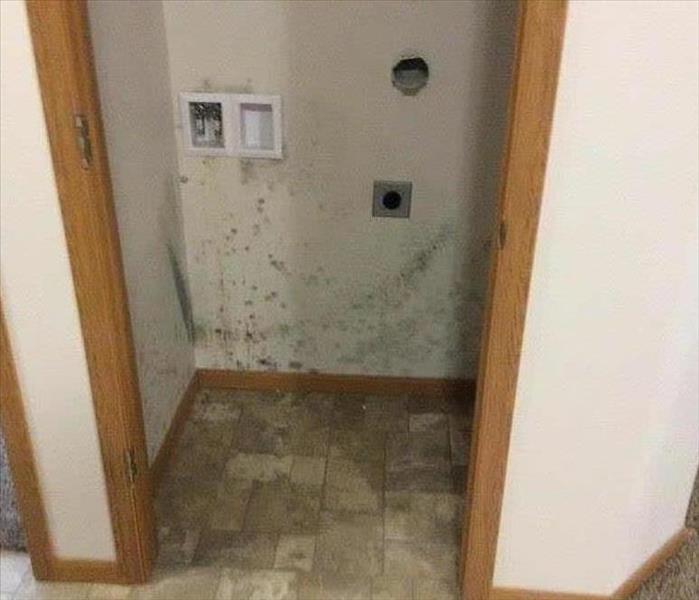 In Southwest Grand Rapids, mold can spread through a home in as little as 48 hours.
In Southwest Grand Rapids, mold can spread through a home in as little as 48 hours.
Microscopic mold spores naturally occur almost everywhere, both outdoors and indoors. This makes it impossible to remove all mold from a home or business. Therefore, mold remediation reduces the mold spore count back to its natural or baseline level. Some restoration businesses advertise “mold removal” and even guarantee to remove all mold, which is a fallacy. Consider the following mold facts:
- Mold is present almost everywhere, indoors and outdoors.
- Mold spores are microscopic and float along in the air and may enter your home through windows, doors, or AC/heating systems or even hitch a ride indoors on your clothing or a pet.
- Mold spores thrive on moisture. Mold spores can quickly grow into colonies when exposed to water. These colonies may produce allergens and irritants.
- Before mold remediation can begin, any sources of water or moisture must be addressed. Otherwise, the mold may return.
- Mold often produces a strong, musty odor and can lead you to possible mold problem areas.
- Even higher-than-normal indoor humidity can support mold growth. Keep indoor humidity below 45 percent.
If your home or business has a mold problem, we can inspect and assess your property and use our specialized training, equipment, and expertise to remediate your mold infestation.
If You See Signs of Mold, Call Us Today – 616-662-9700
Southwest Grand Rapids, MI Residents: Follow These Mold Safety Tips If You Suspect Mold
3/21/2017 (Permalink)
If you see visible mold, do not disturb it. You can inadvertently spread the mold infestation throughout your home. When mold is disturbed, the mold can release microscopic mold spores which become airborne and can circulate inside your home.
What to Do:
- Stay out of affected areas.
- Turn off the HVAC system and fans.
- Contact SERVPRO of Southwest Grand Rapids for mold remediation services.
What Not to Do:
- Don’t touch or disturb the mold.
- Don’t blow air across any surfaces with visible or suspected mold growth.
- Don’t attempt to dry the area yourself.
- Don’t spray bleach or other disinfectants on the mold.
About Our Mold Remediation Services
SERVPRO of Southwest Grand Rapids specializes in mold cleanup and restoration, in fact, it’s a cornerstone of our business. Our crews are highly trained restoration professionals that use specialized equipment and techniques to properly remediate your mold problem quickly and safely.
If You See Signs of Mold, Call Us Today – 616-662-9700




 24/7 Emergency Service
24/7 Emergency Service



